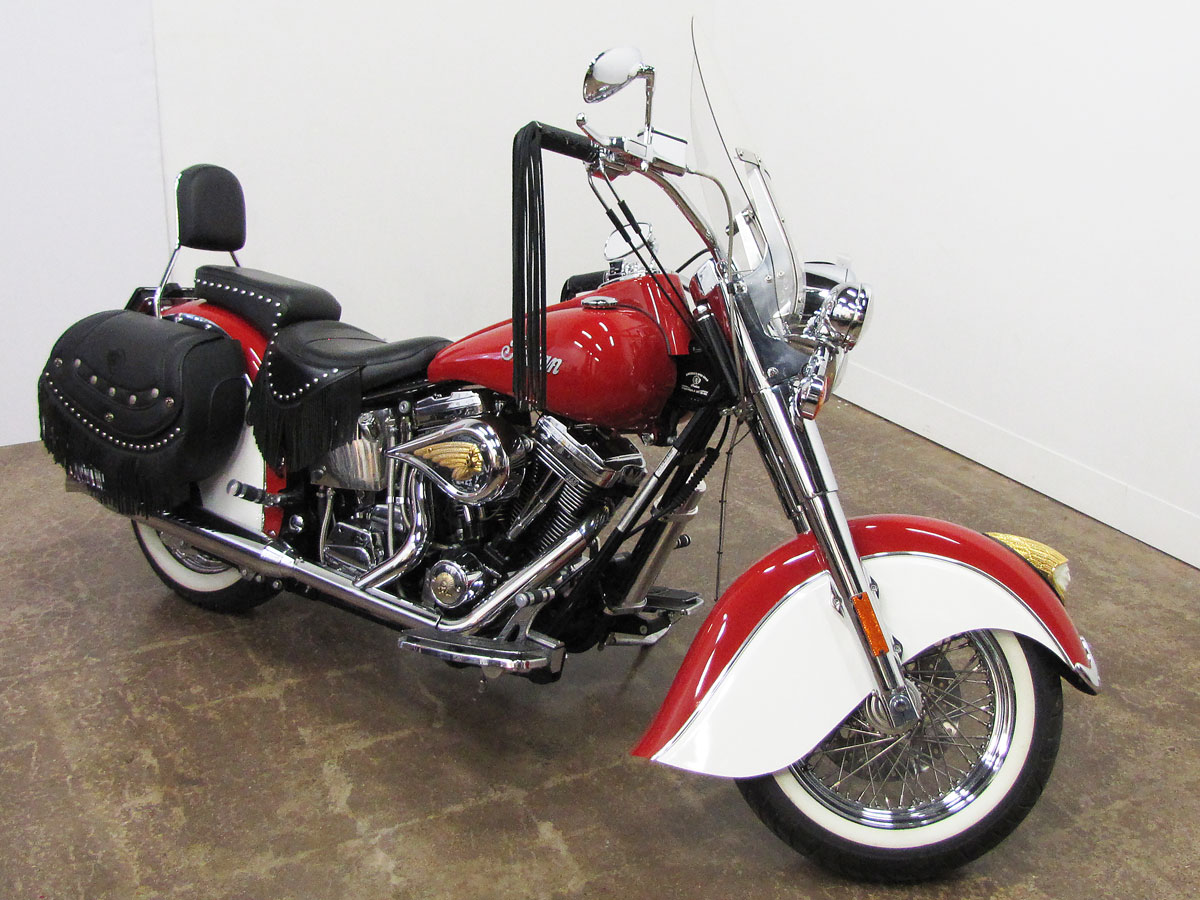
Indian as a motorcycle brand dates back to the 1901 launch of the first Indian motorcycle by George Hendee and Oscar Hedstrom in Springfield, Massachusetts. The machine’s origins are a bicycle racing pacer engineered by Hedstrom and some creative marketing thinking by Hendee. Hedstrom was building pacer motorcycles. Hendee felt it could be more than a pacer; viable personal transportation. So the 1901 “Camelback” was the first of many fine Indians.
With some changes in ownership and ups and downs in sales, Indian produced motorcycles for over 50 years, until 1953, and went out of business. For the following 50-plus years, various attempts were made to revive the brand with most being underfunded and unsuccessful. In 1998 Toronto-based Indian Motorcycle Company acquired the California Motorcycle Company to create the new Indian Motorcycle Company of Gilroy, California. With litigation resolved over intellectual property rights, the CMC product line was re-launched under the Indian brand, the first machines off the assembly line in 1999. This iteration of Indian lasted until September 2003 when bankruptcy was declared. A combination of a compromised dealer network, a need for better quality control and a lack of distinction in the S&S-supplied engine contributed to the company’s demise.
But celebrating 100 years of the Indian brand, the exceptional, extremely low mileage 2001 Centennial model illustrated here is a great example of the CMC’s output. Special badging and paint make this machine unique. Its owner, James Kenney, who bought it new, realized its value as a marker in Indian history and put less than 90 miles on it, choosing to keep it as an original unrestored machine.
Last month James Kenney contacted the Museum asking about donating his Chief to the Museum’s permanent collection, and of course the affirmative decision came in moments. This motorcycle fills a key niche in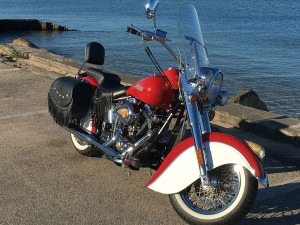 Indian history, is very important to the Museum telling the history of Indian and donor James Kenney agrees. “I have always liked the look of the Indian Motorcycle. Love those “Fat” fenders. Just a beautiful classic look. I went for a ride to Lake Michigan, the one and only ride I had on it. The bike is gorgeous I just didn’t have it in my heart for the odometer to hit 100 miles on it. The Indian is American Motorcycle History and this Chief being 100 years (2001) since the first Indian motorcycle which is the first American motorcycle produced, it’s a work of Art. I’m a Factory Worker and not the kind of person to afford such a donation but this is how we keep our History. I wanted to do this so that it will be preserved for many, many years. My small part of American Motorcycle History.”
Indian history, is very important to the Museum telling the history of Indian and donor James Kenney agrees. “I have always liked the look of the Indian Motorcycle. Love those “Fat” fenders. Just a beautiful classic look. I went for a ride to Lake Michigan, the one and only ride I had on it. The bike is gorgeous I just didn’t have it in my heart for the odometer to hit 100 miles on it. The Indian is American Motorcycle History and this Chief being 100 years (2001) since the first Indian motorcycle which is the first American motorcycle produced, it’s a work of Art. I’m a Factory Worker and not the kind of person to afford such a donation but this is how we keep our History. I wanted to do this so that it will be preserved for many, many years. My small part of American Motorcycle History.”
When you visit the Indian Motorcycle Story exhibit area at the National Motorcycle Museum you’ll see a wide range of Indians important to the brand’s history, including the Torque Four, on loan from the Antique Motorcycle Foundation and the Century Chief, the super rare prototype, Wayne Baughman’s ill-fated attempt to revive the brand. In the Museum’s lobby is an exquisite example of current Indian design from Polaris Industries, a 2017 Indian Chief Vintage fund-raiser bike. While interesting reading, this chronicle of the brand’s ownership and ups and downs, it’s great to see the brand’s fate sealed with the competent management of Polaris Industries into the future.
Here’s a quick timeline to catch you up, and specs on the featured 2001 Chief new to the Museum’s collection:
1902 – After making three motorcycles in 1901, actual Indian production started in 1902. Technically Indian went out of business in 1953
1953 – An arrangement with Brockhouse Engineering LTD in England revived Indian somewhat until 1961
1960 – AMC, another British company buys the Indian trademark
1962 – AMC goes bankrupt ending their venture
1968 – Publisher and entrepreneur Floyd Clymer begins to import motorcycles from Europe branded as Indians. They have Italian frames and various British and German engines. Some Taiwanese machines are also manufactured and branded Indian. Clymer’s company folds about 1977.
1992 – After being dormant another 15 Years, in 1992 Philip Zanghi bought the rights to the trademark; convicted of fraud and money laundering in 1997, Zanghi never mass produced any motorcycles. Five years later Zanghi goes to prison for fraud.
1994 – Wayne Baughman’s Indian Motorcycle Manufacturing, Inc. announces plans to build the Century Chief. Baughman built prototypes like the one in the Museum, but the new motorcycle never went into production.
1997 – Eller Industries announces intention to resurrect Indian. A mockup is shown, but rights to Indian’s intellectual property are tied up in litigation.
1998 – Toronto-based Indian Motorcycle Company acquires the California Motorcycle Company to create the new Indian Motorcycle Company of Gilroy, California. With litigation resolved over intellectual property rights, the CMC product line is re-launched under the Indian brand but the company is bankrupt by September 2003.
2006 – Stellican Limited, a British company acquired the Indian trademark rights and began successfully manufacturing and selling completely new design Indians in Kings Mountain, North Carolina in 2009
2011 – Polaris Industries of Minnesota purchases the Stellican-revived Indian brand and continues manufacturing 2012 model year machines in Spirit Lake, Iowa on an assembly line next to one then used to make Victory motorcycles.
2013 – Polaris Industries launches a totally new Indian Chief with their own Thunderstroke 111 cubic inch engine.
2015 – The Indian Scout 60 is launched, the Indian FTR dirt track racer hits the mile and half-mile tracks in America, and is a winner almost from the start.
2001 Indian Chief Centennial Specifications:
- Engine: Air-Cooled, Four-Stroke V-Twin
- Design: Unit Construction, OHV
- Bore & Stroke: 3.60” x 4.30”
- Displacement: 1442 cc’s
- Induction: Carburetor
- Ignition: Electronic
- Starting: Electric
- Horsepower: 75HP, Rated
- Clutch: Dry, Multi-plate
- Primary: Belt Drive
- Transmission: 5-Speed
- Final Drive: Belt
- Frame: Tubular Steel, Cradle
- Brakes: Disk, Front and Rear
- Wheels/Tires: 130/90 X 16 / 130/90 X 16
- Wheelbase: 69 Inches
- Weight: 650 (Claimed)
Leave a Reply
Want to join the discussion?Feel free to contribute!
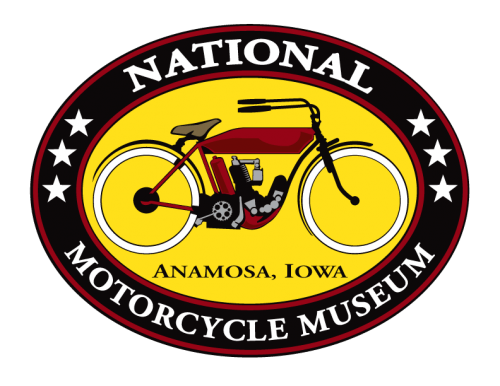
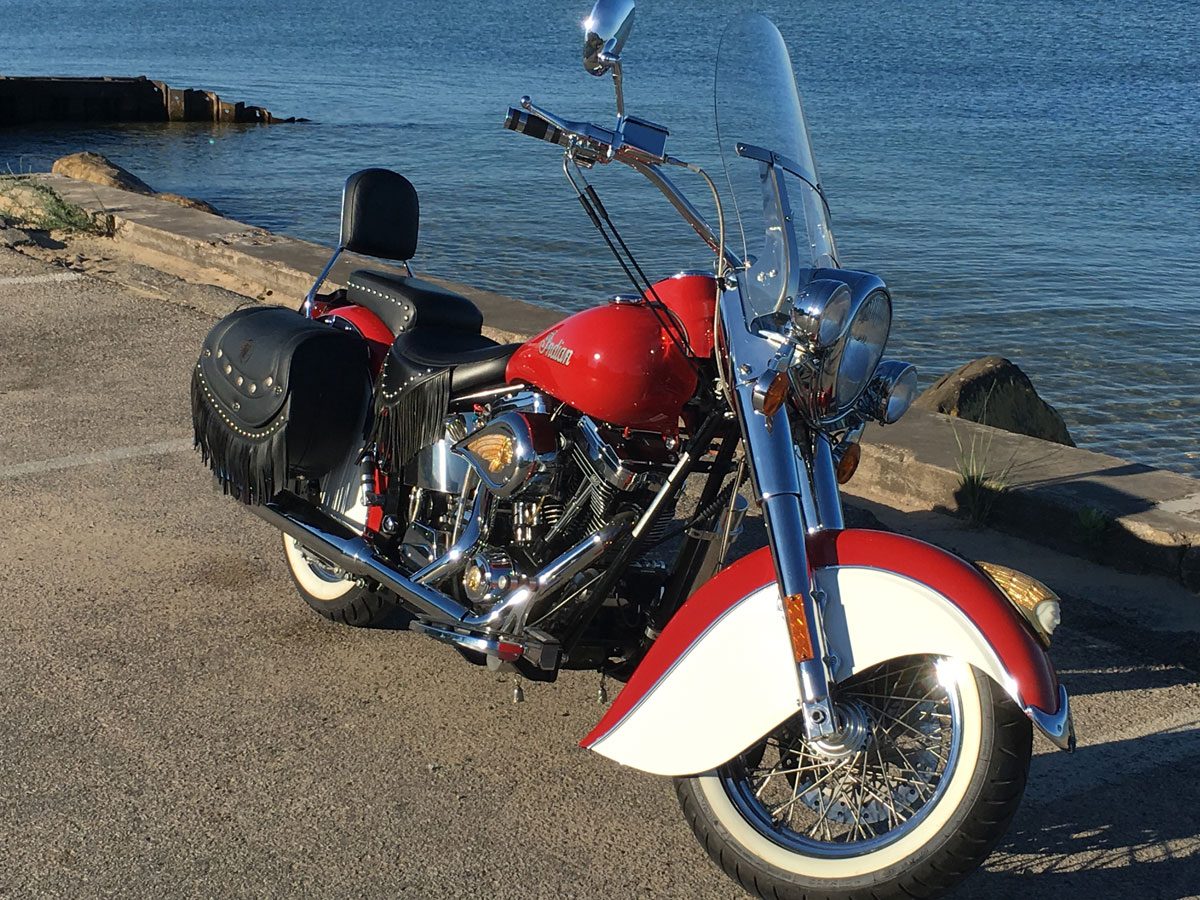
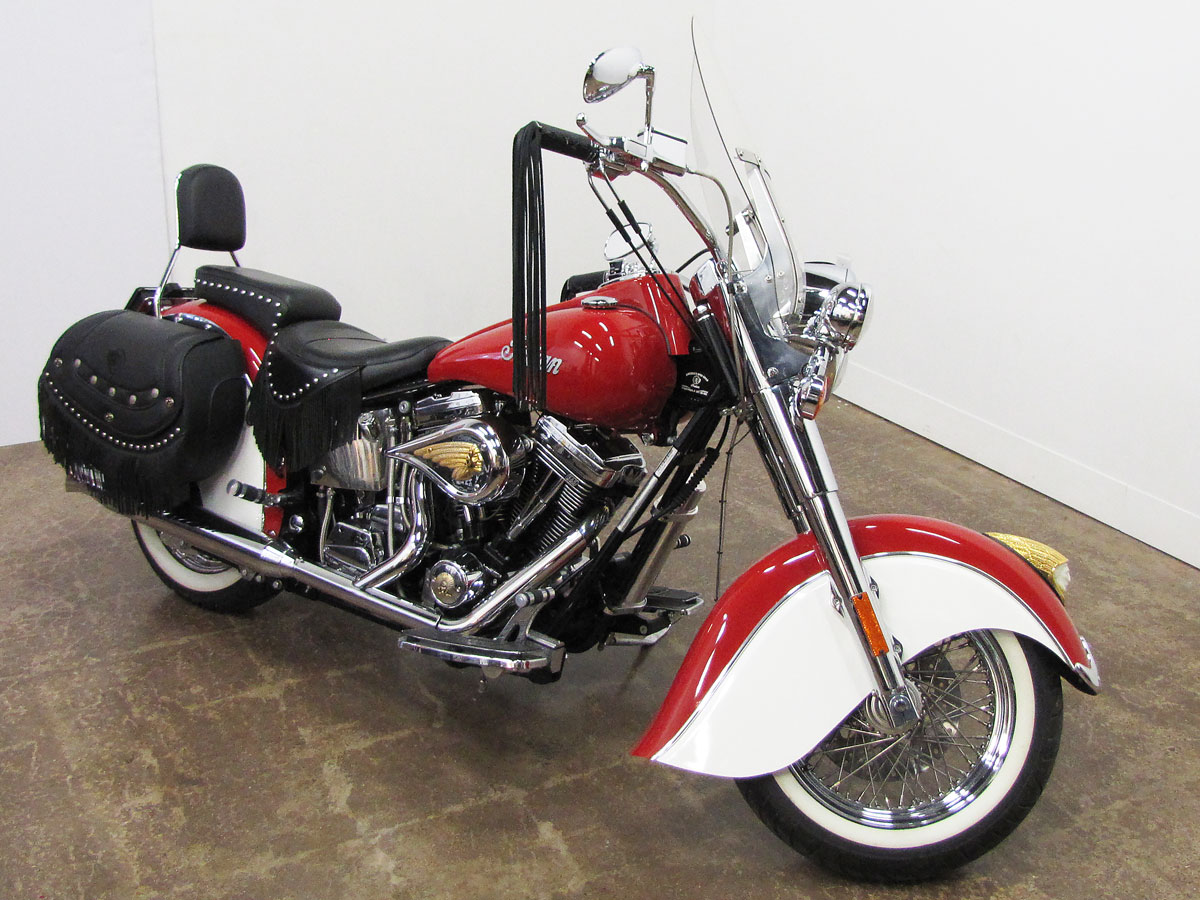
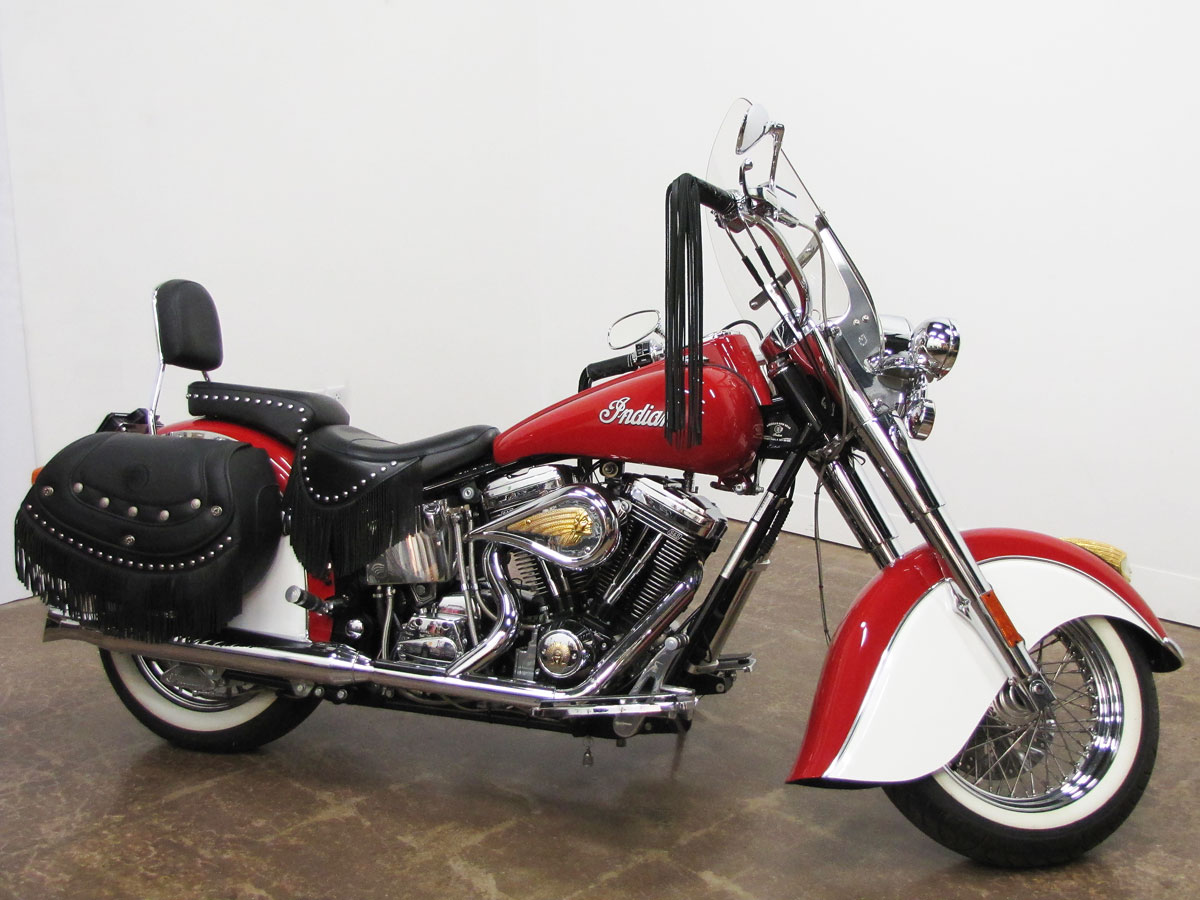
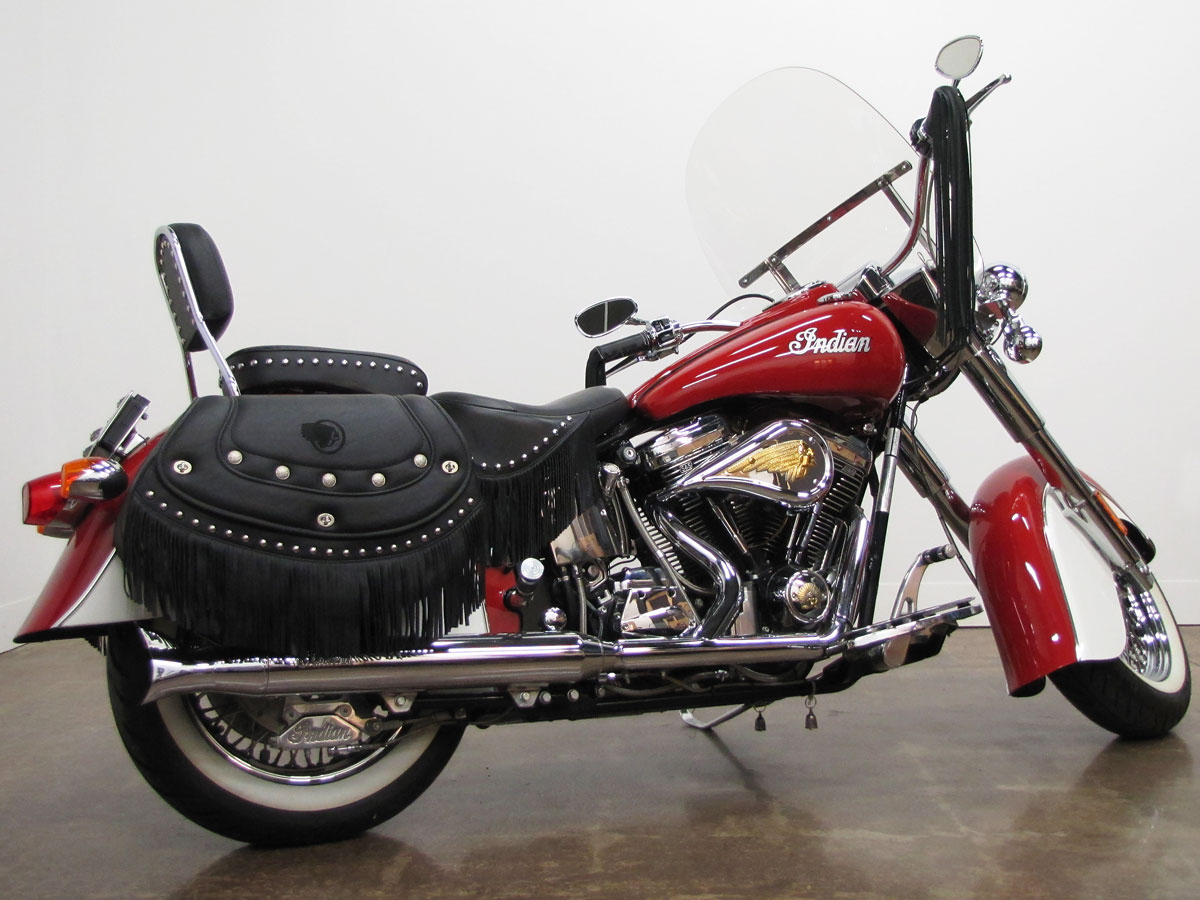
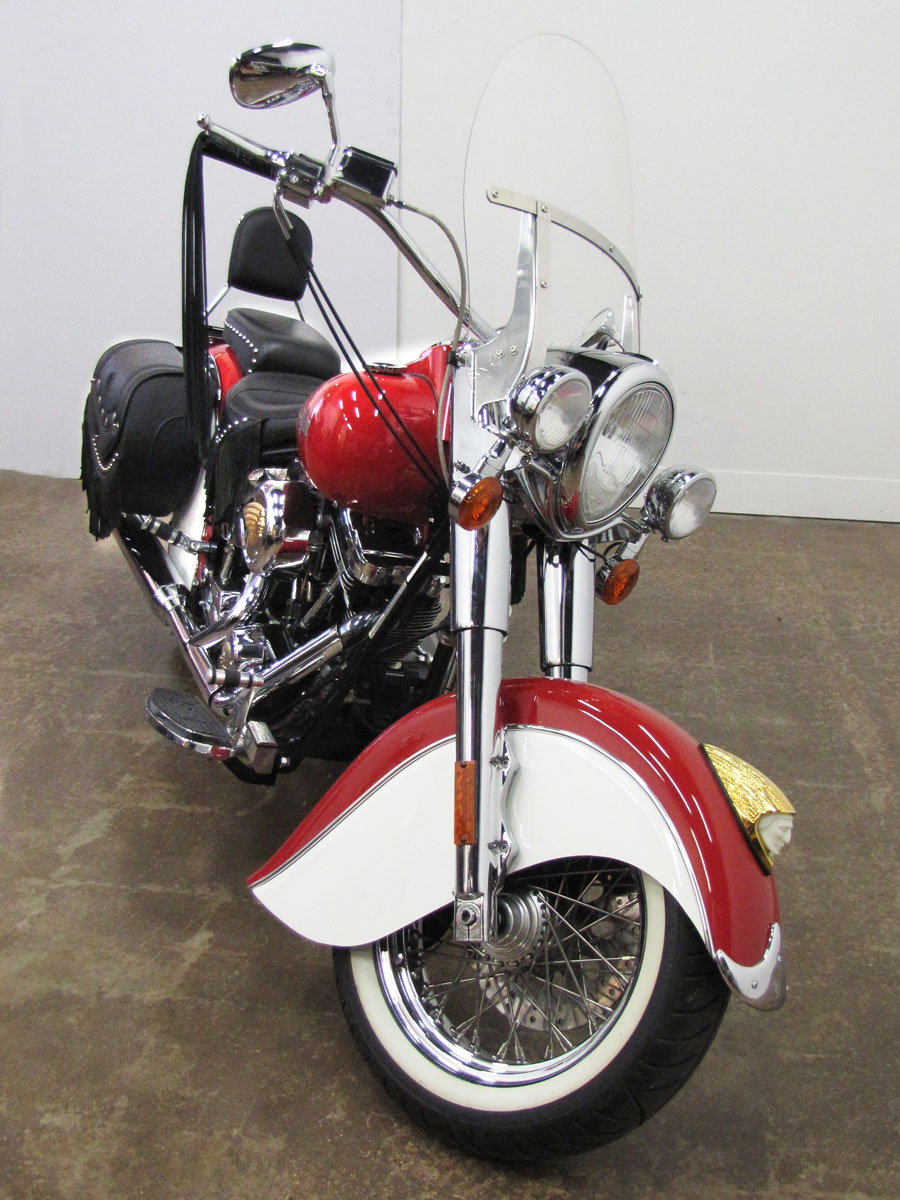
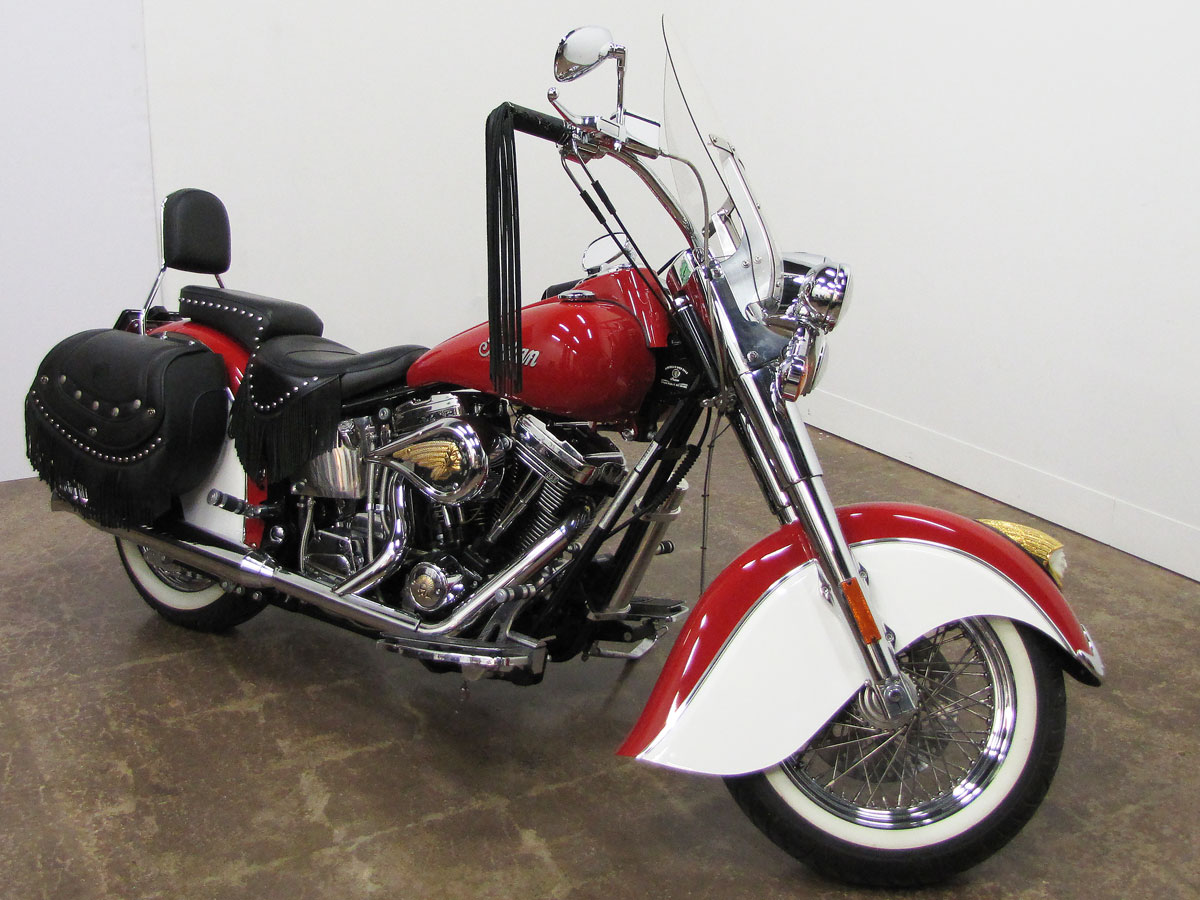
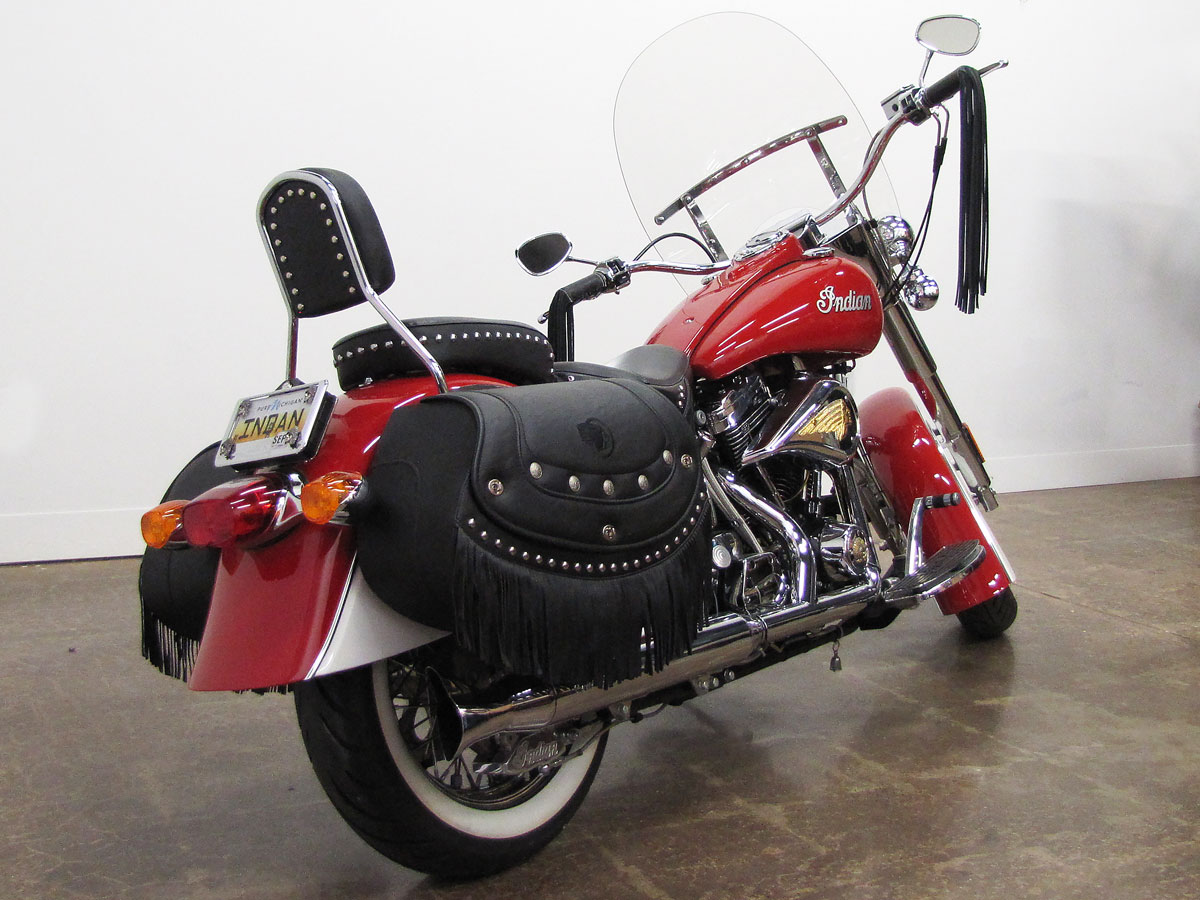
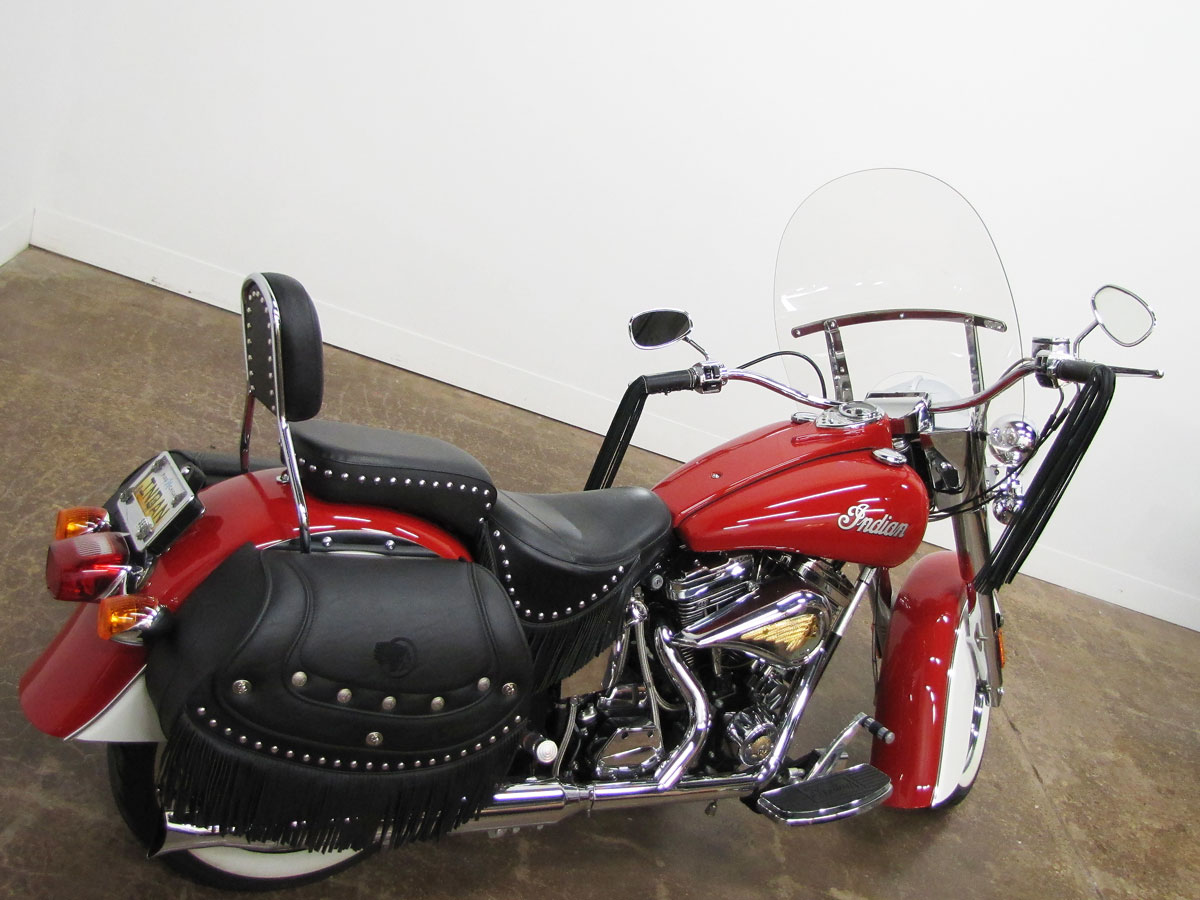
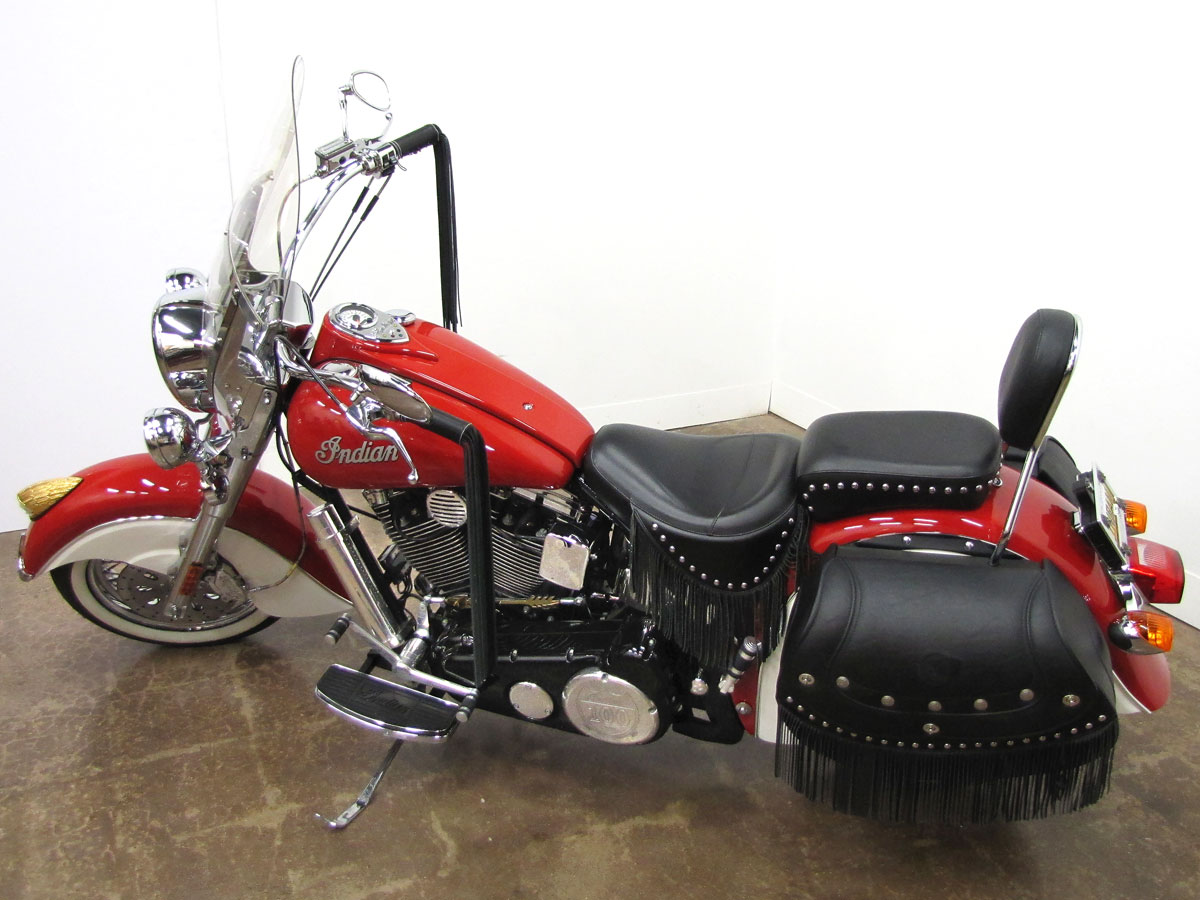
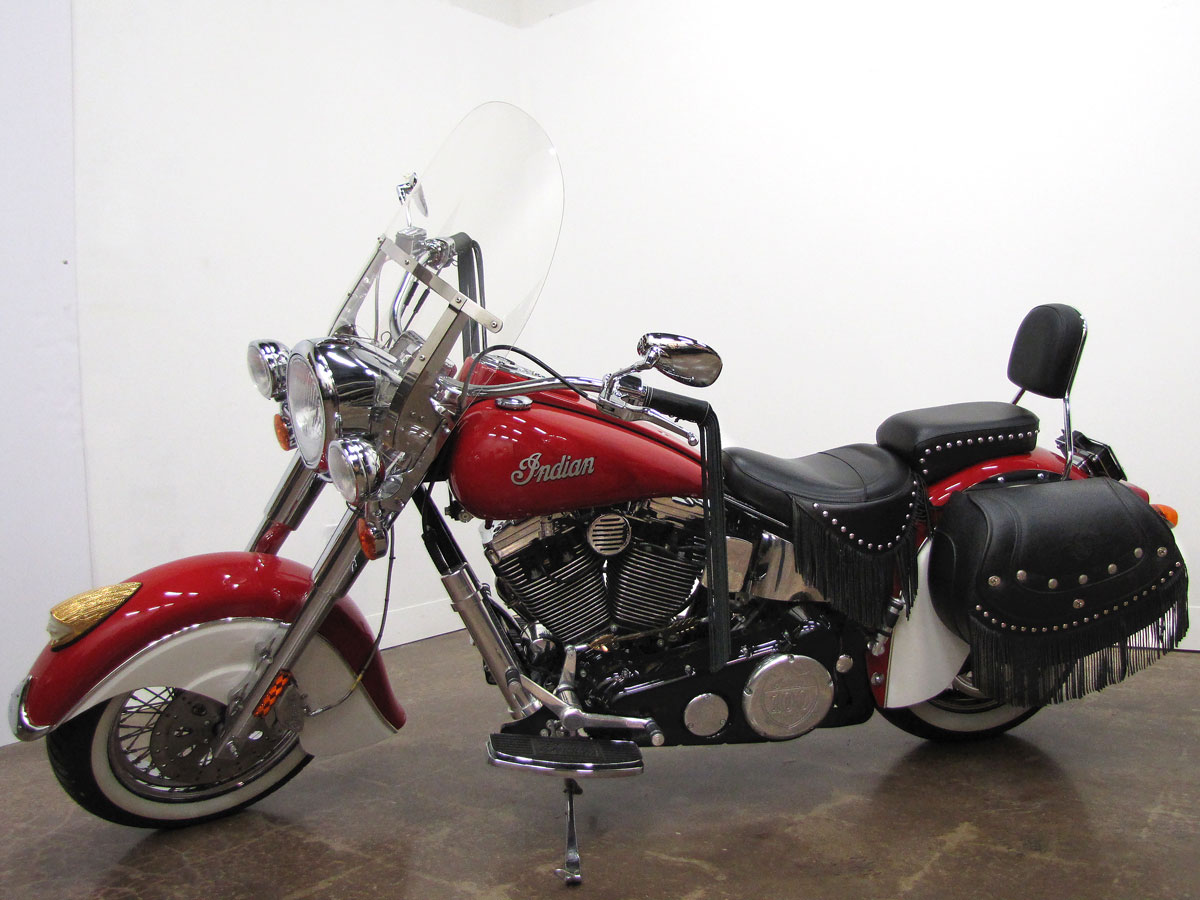
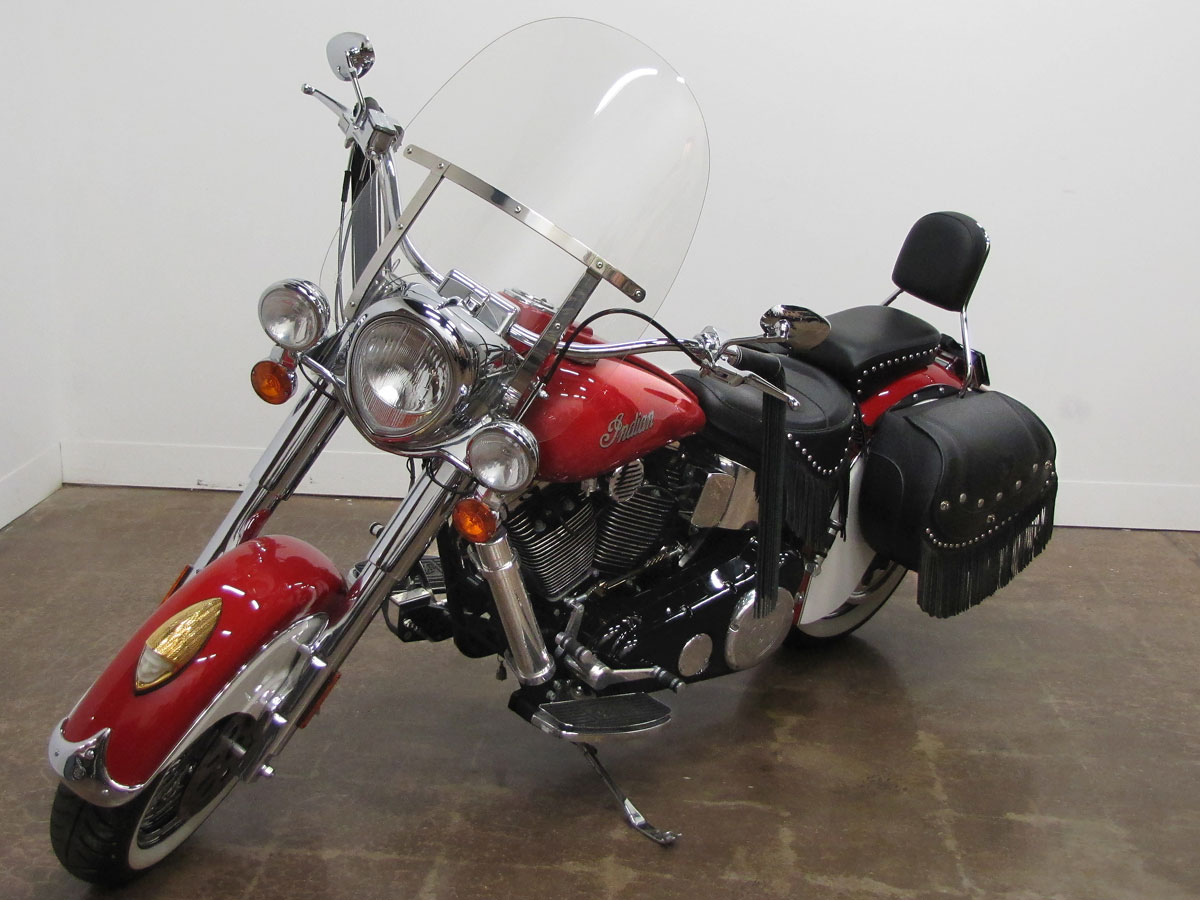
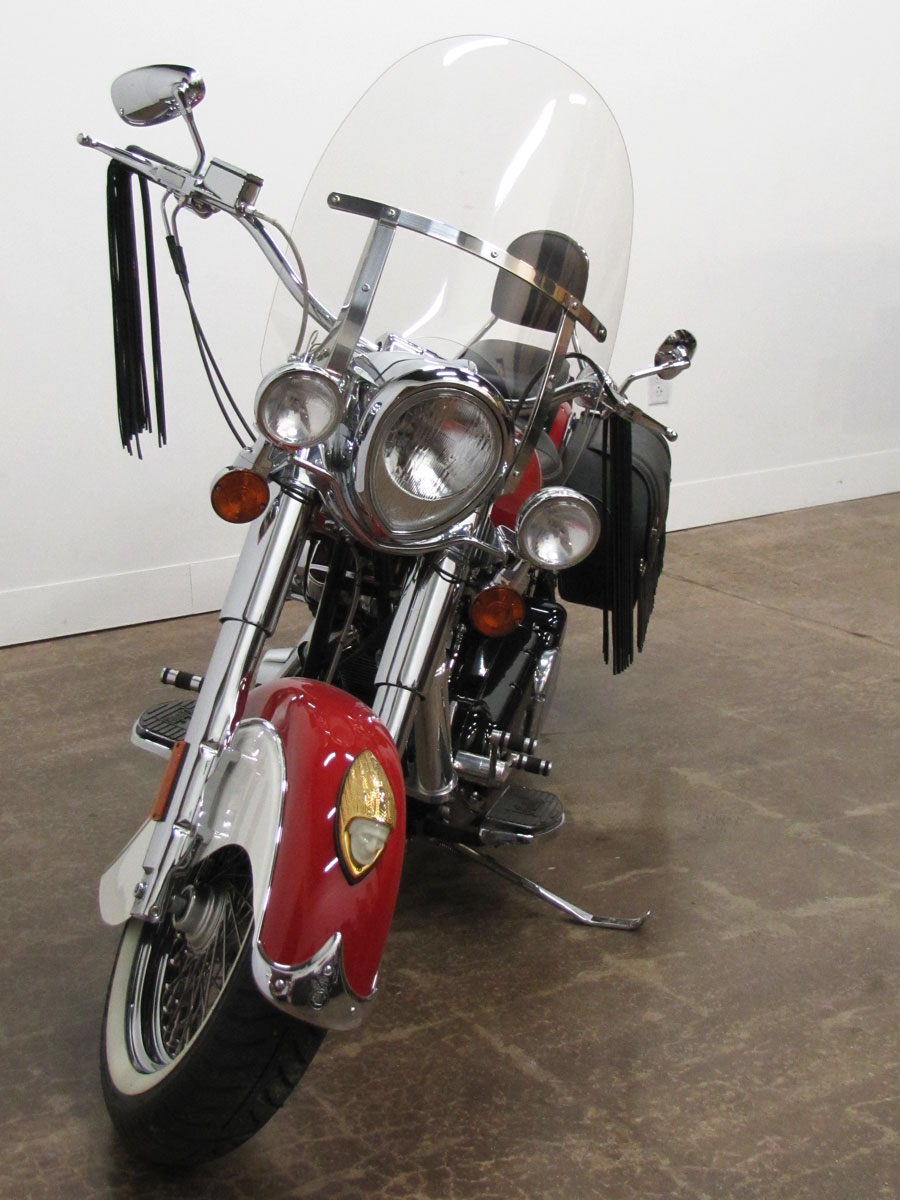
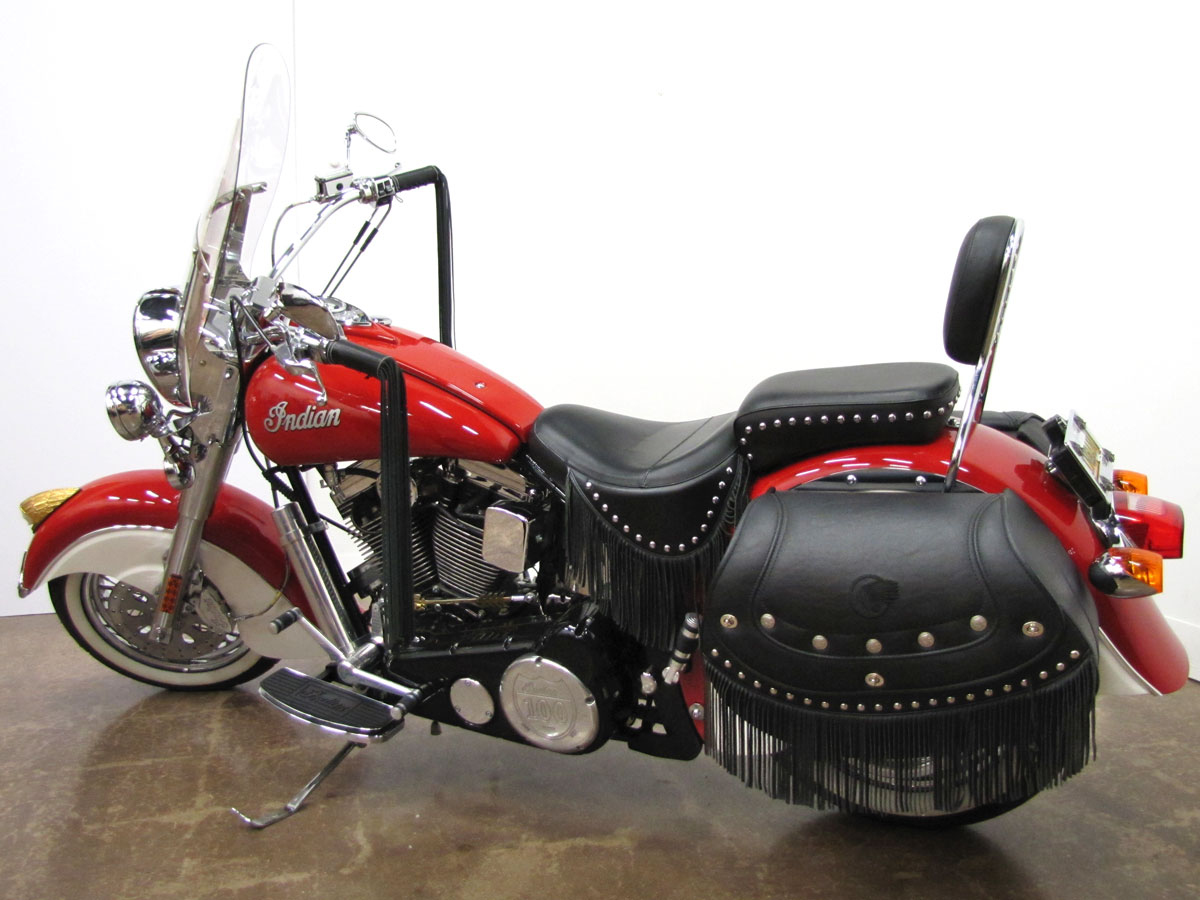
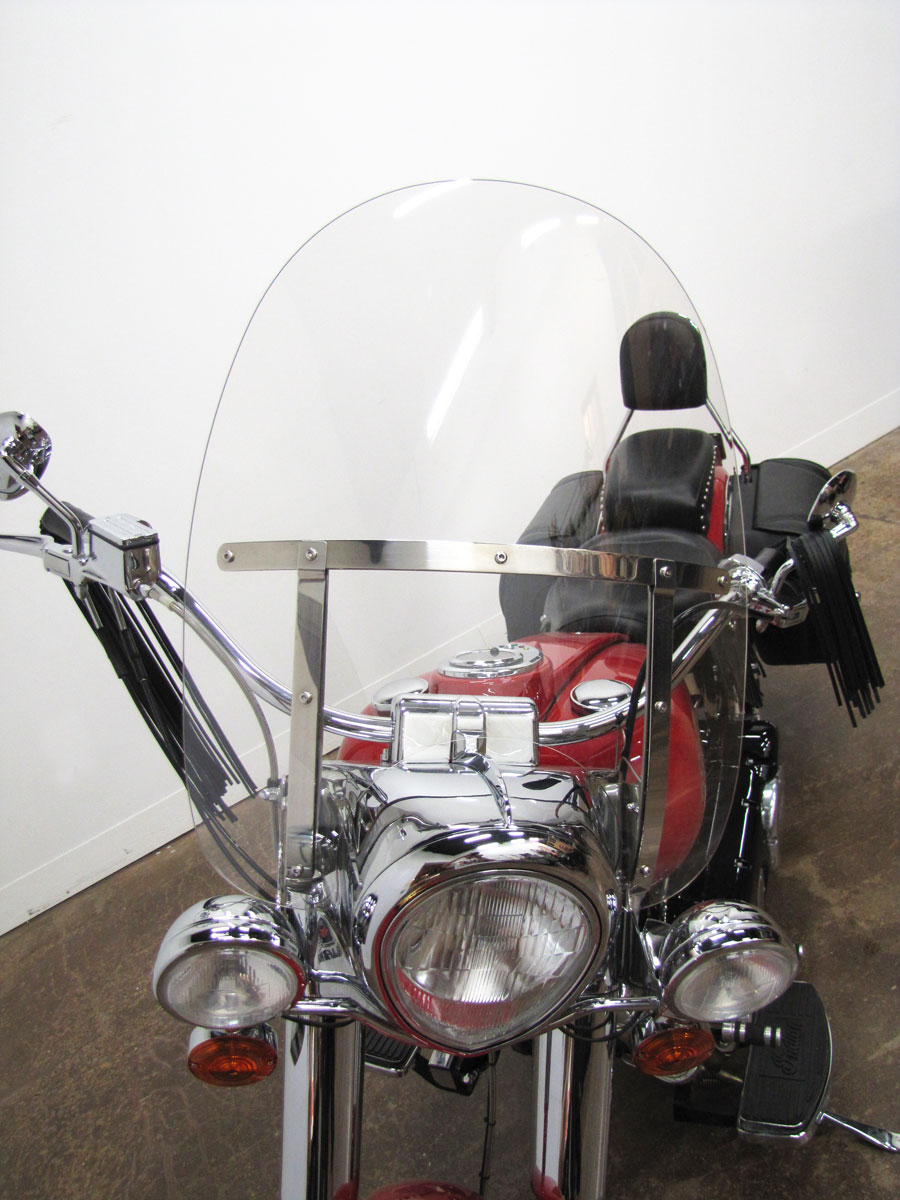
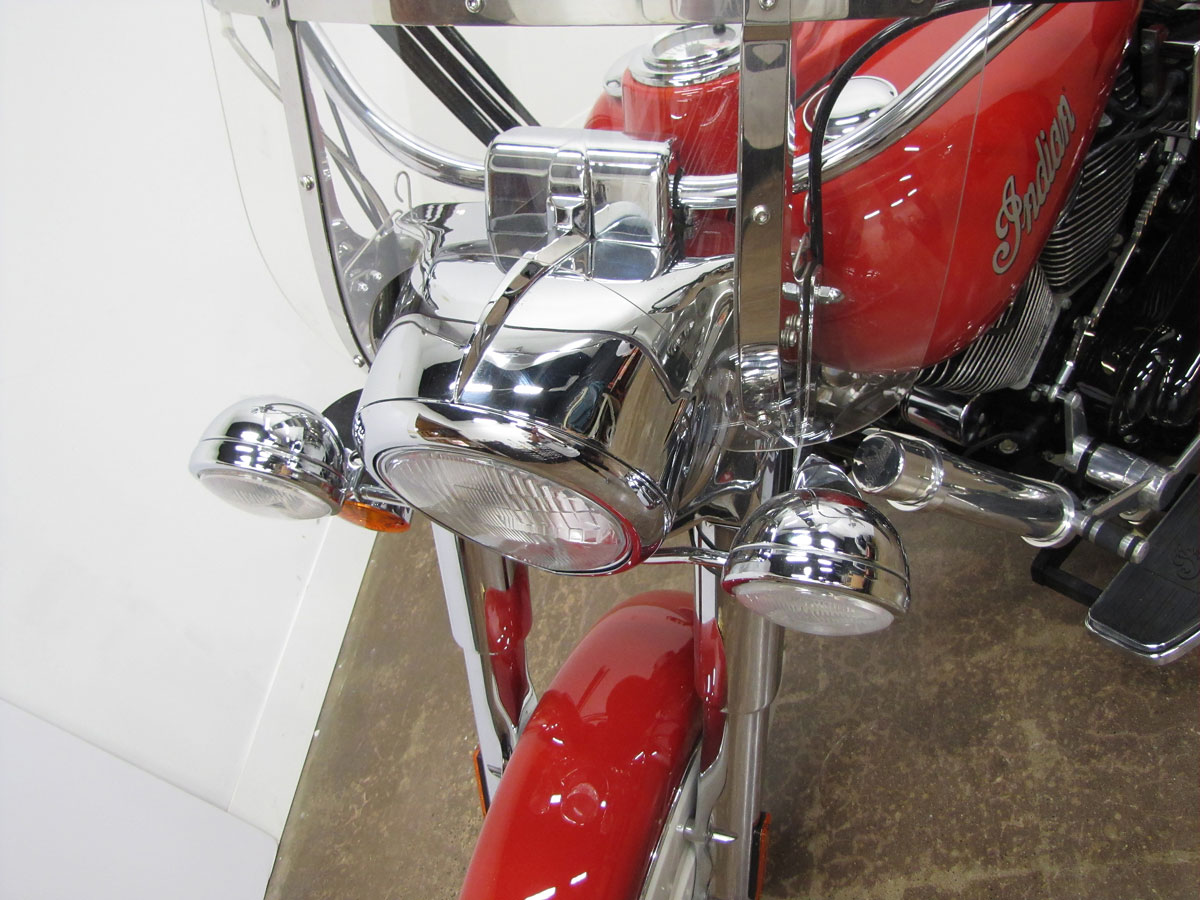
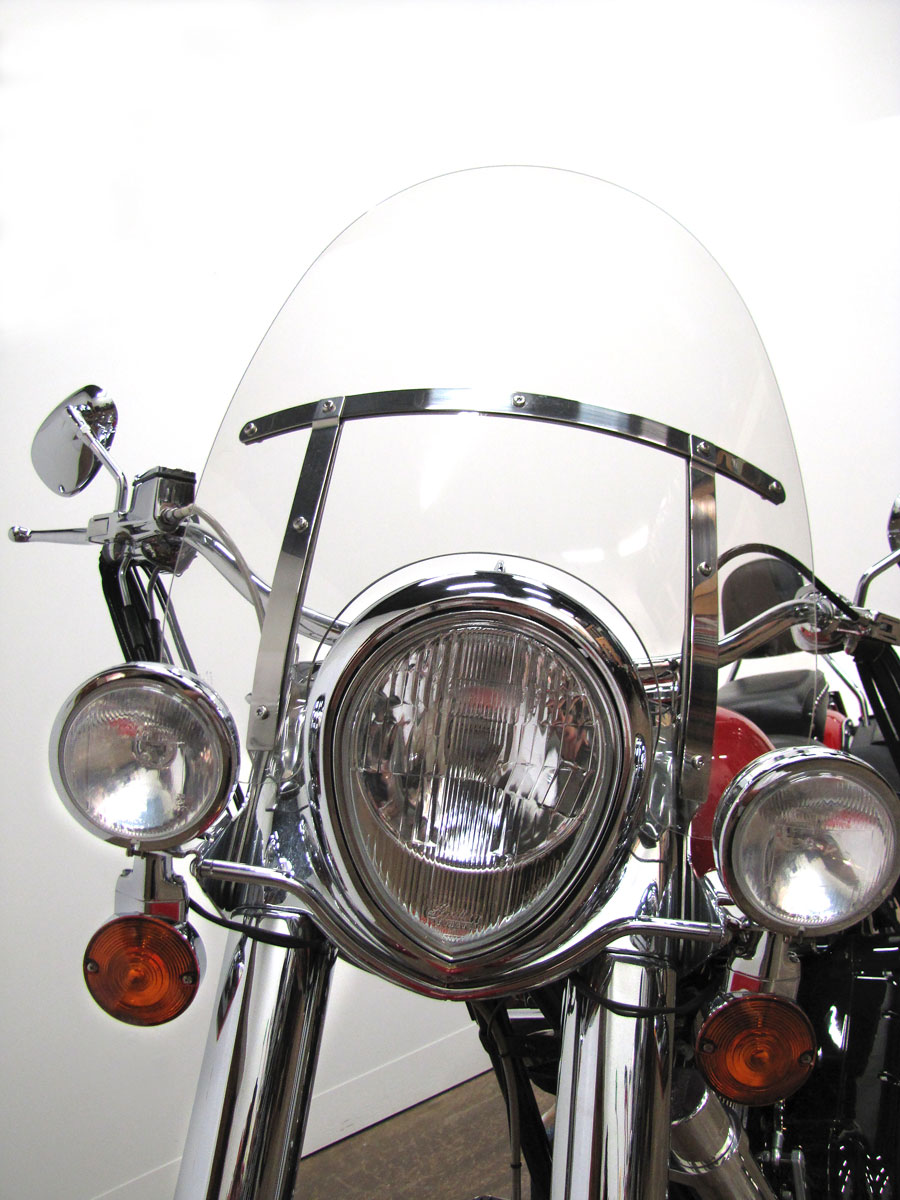
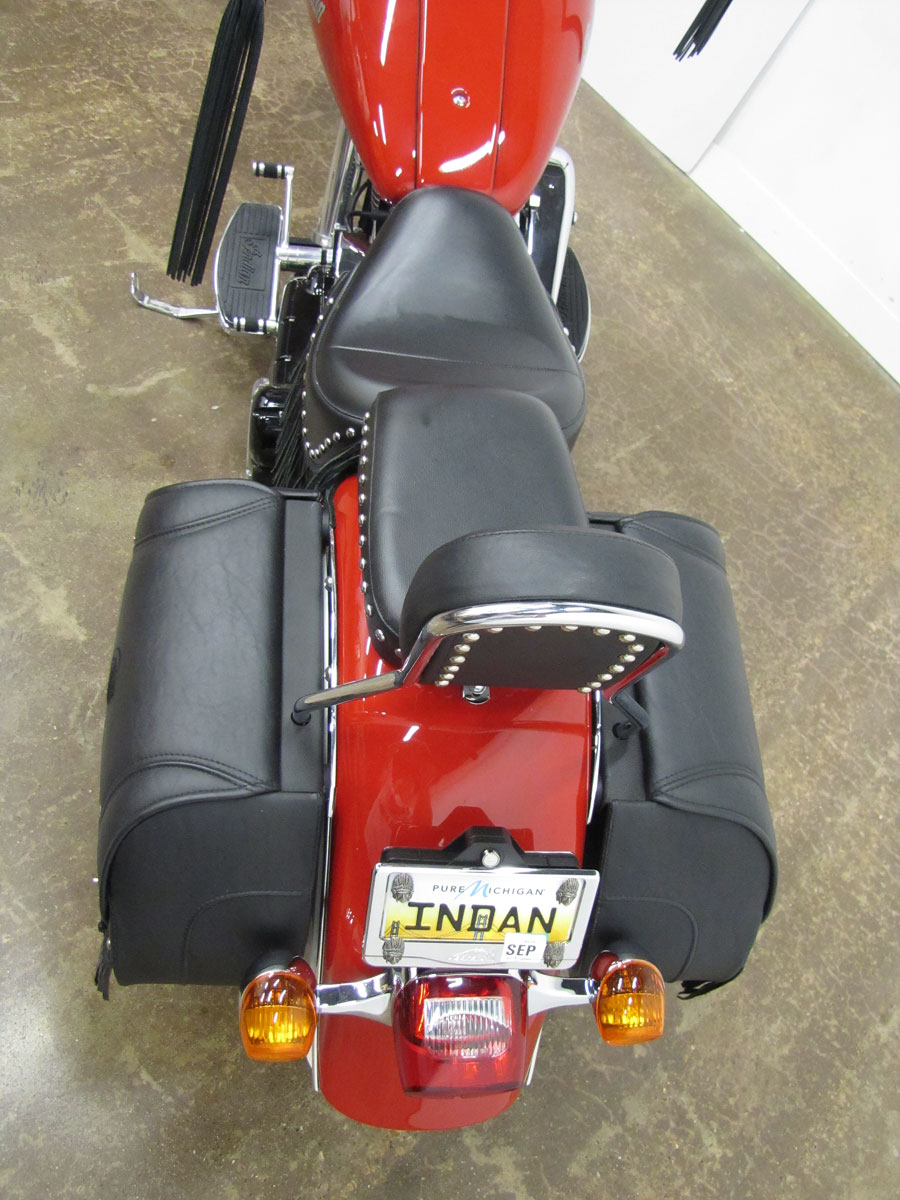
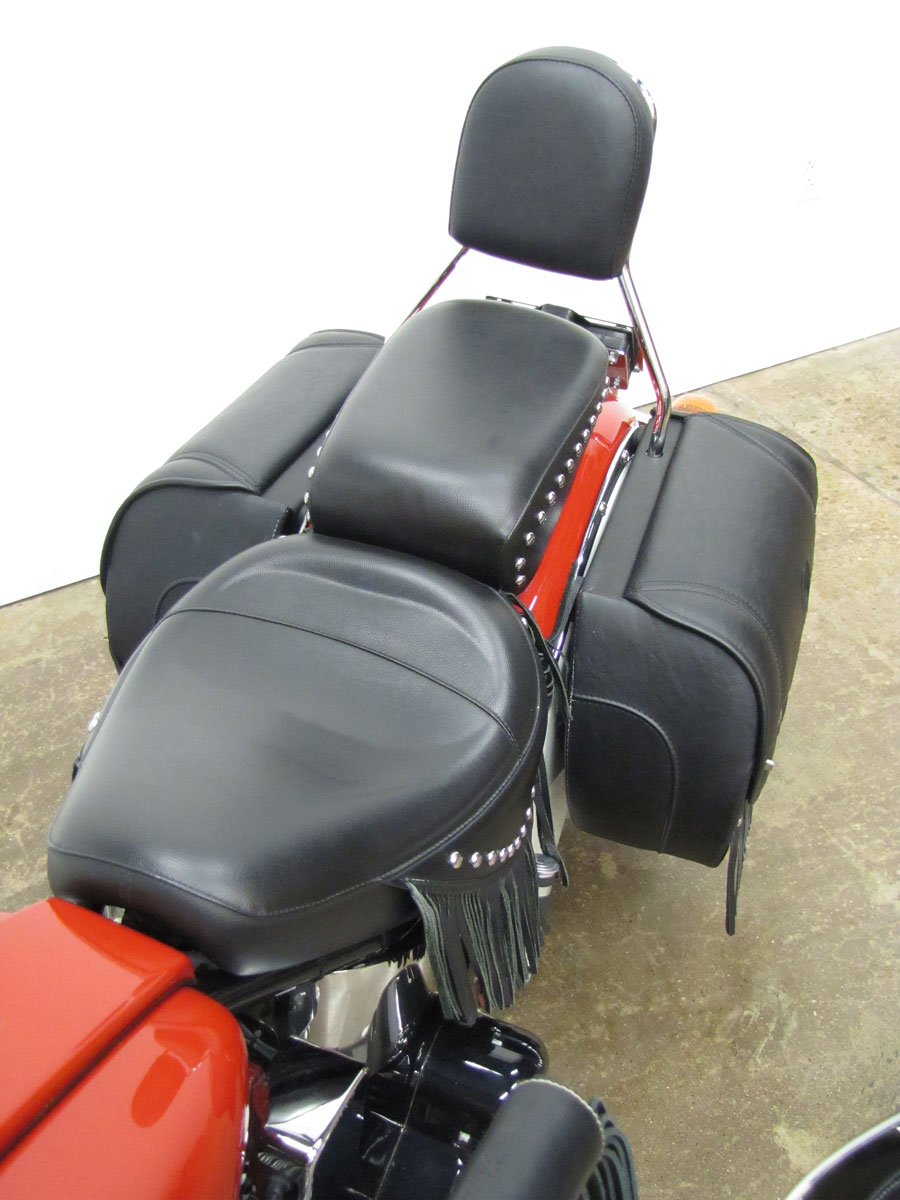
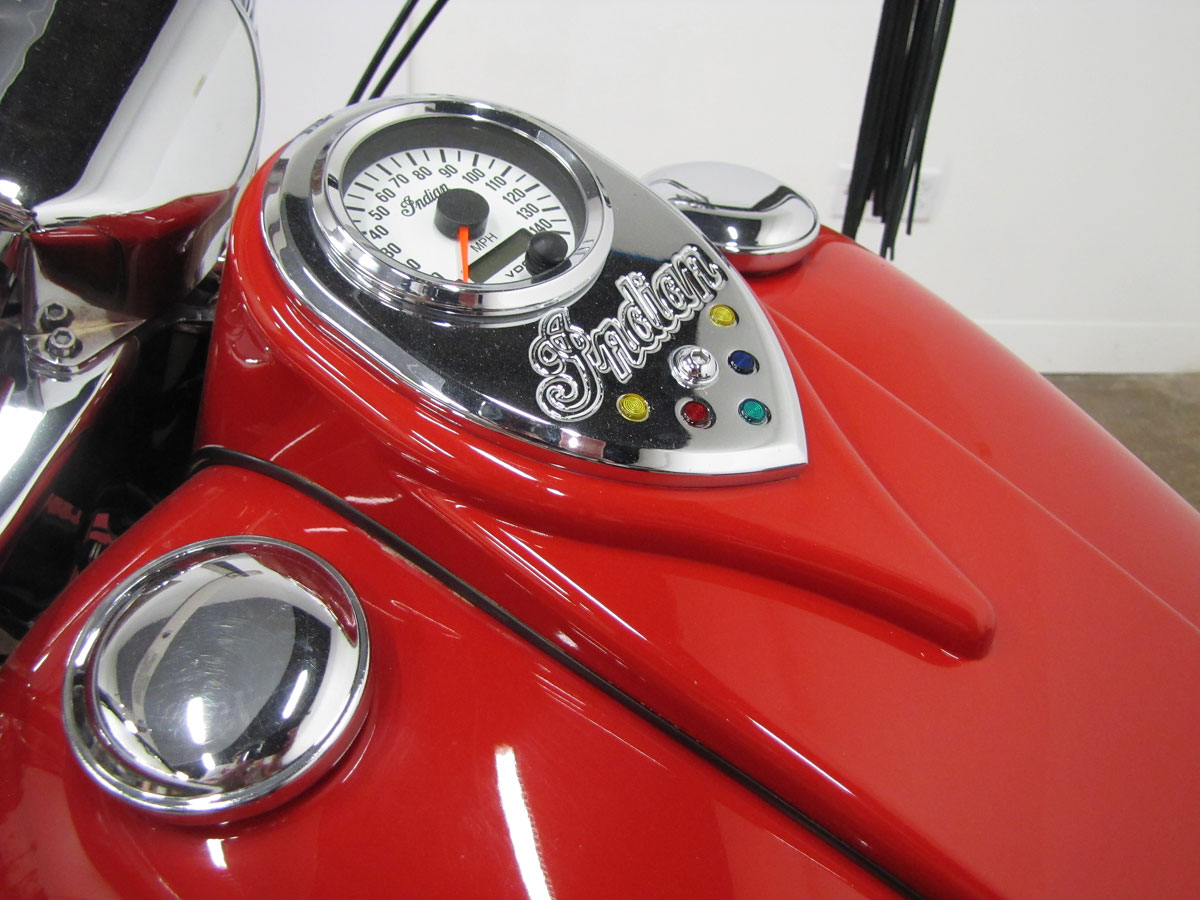
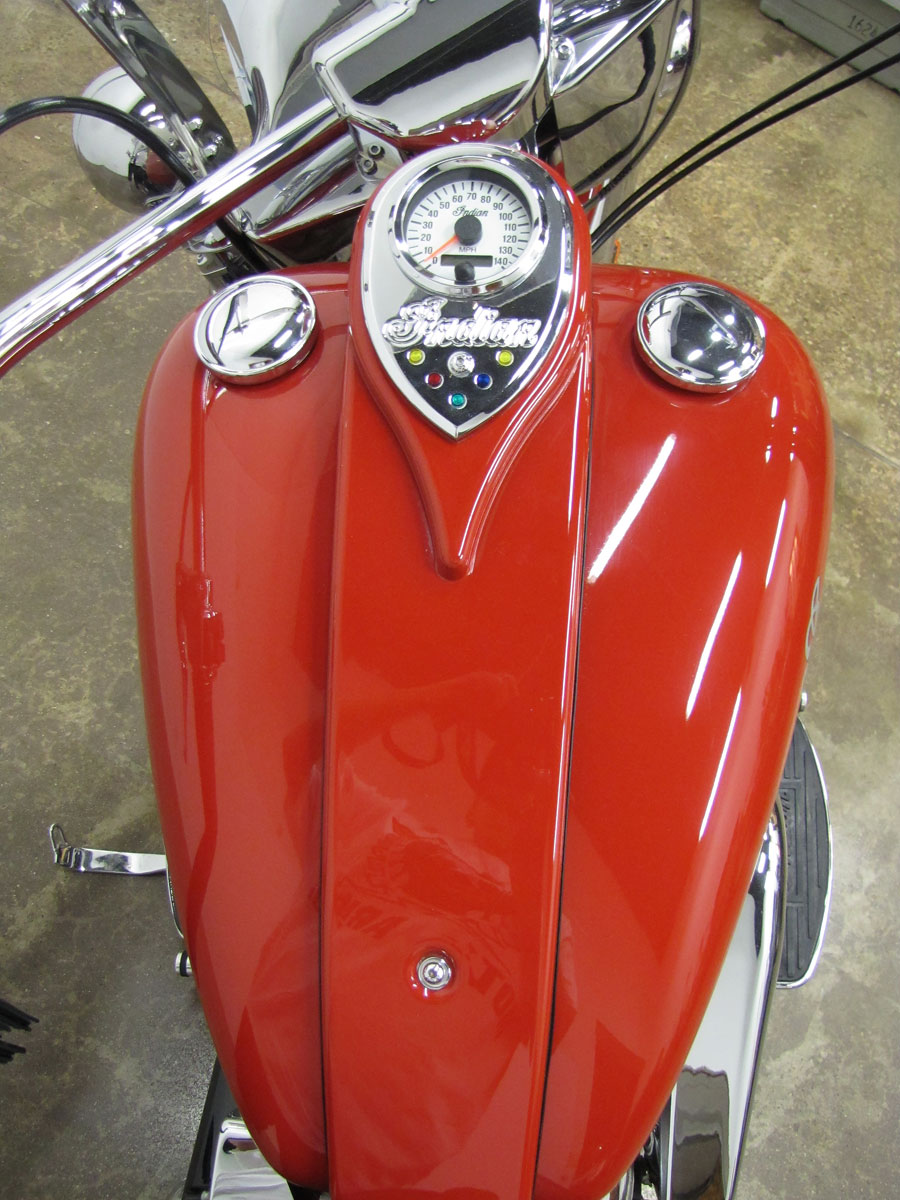
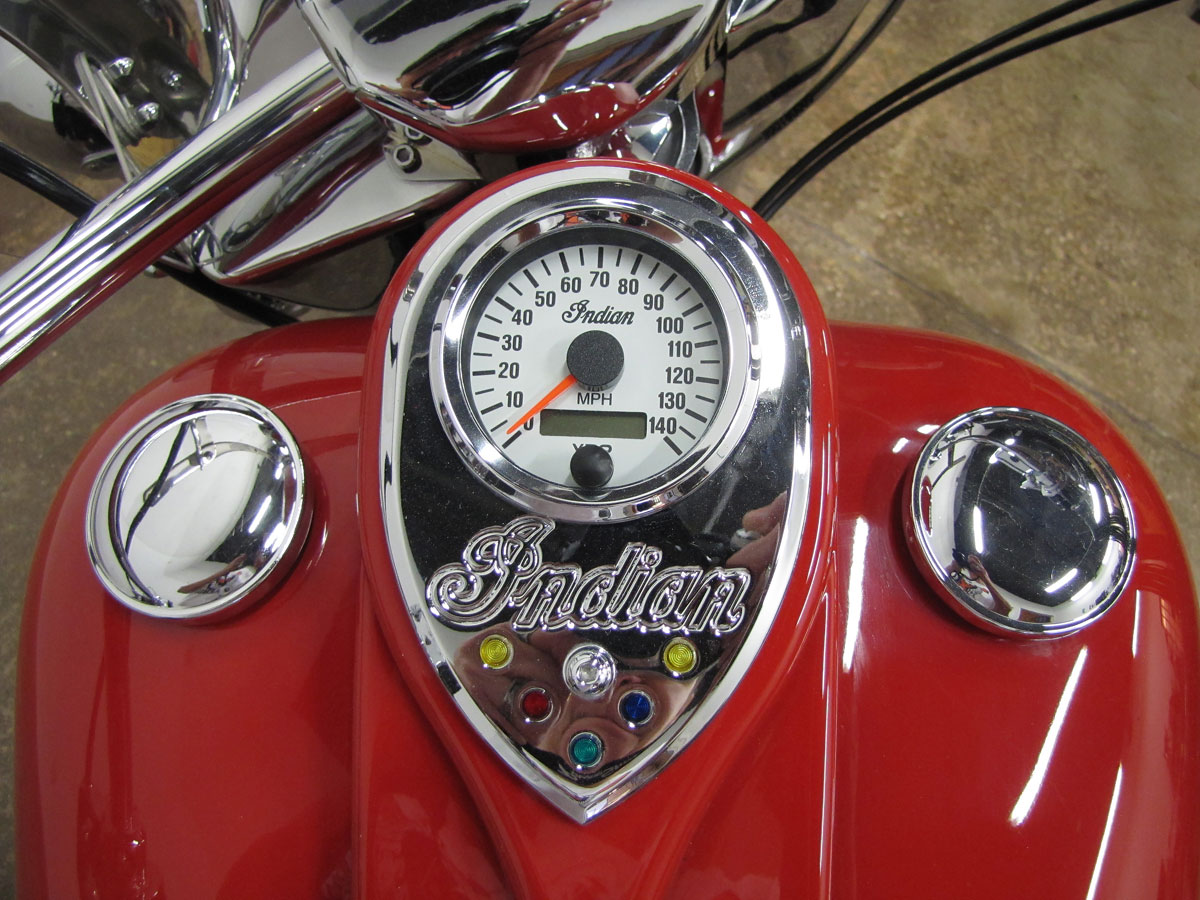
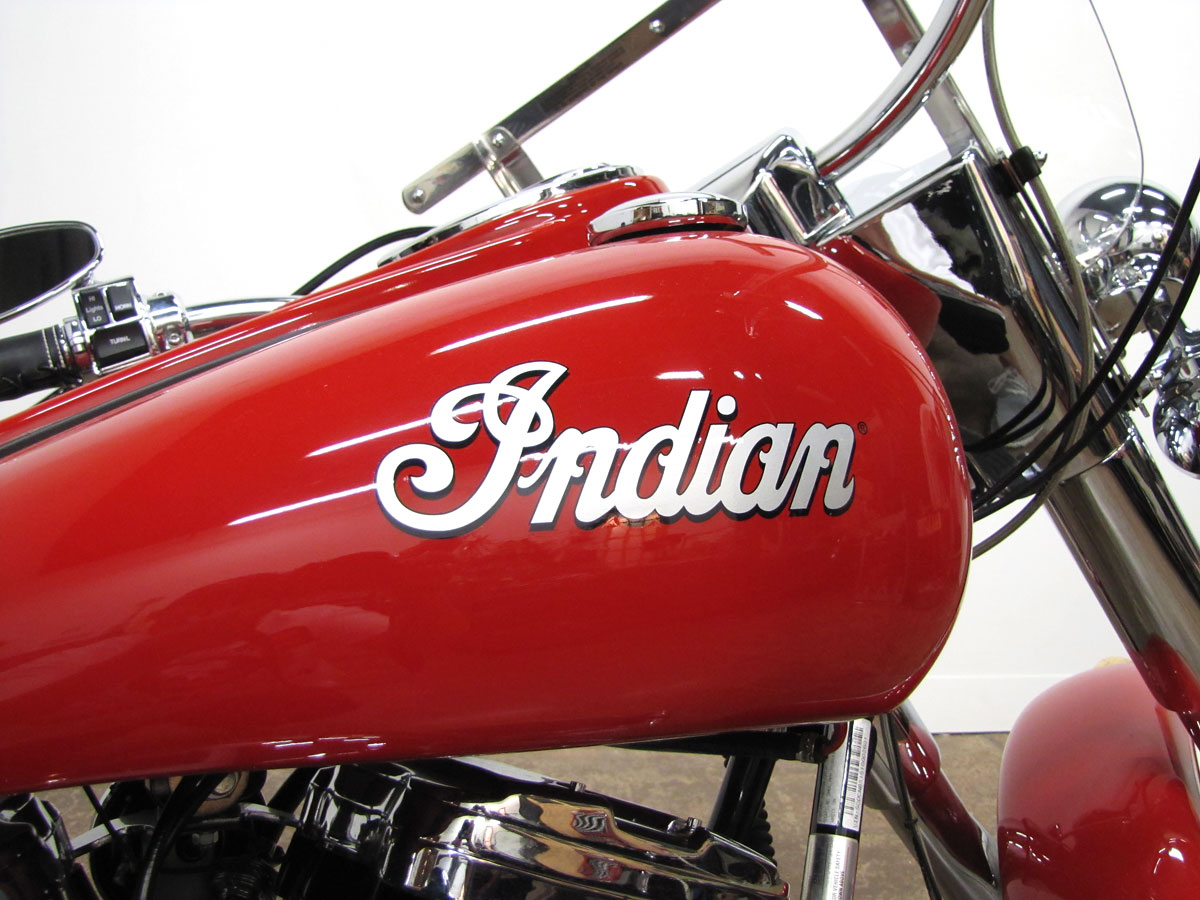
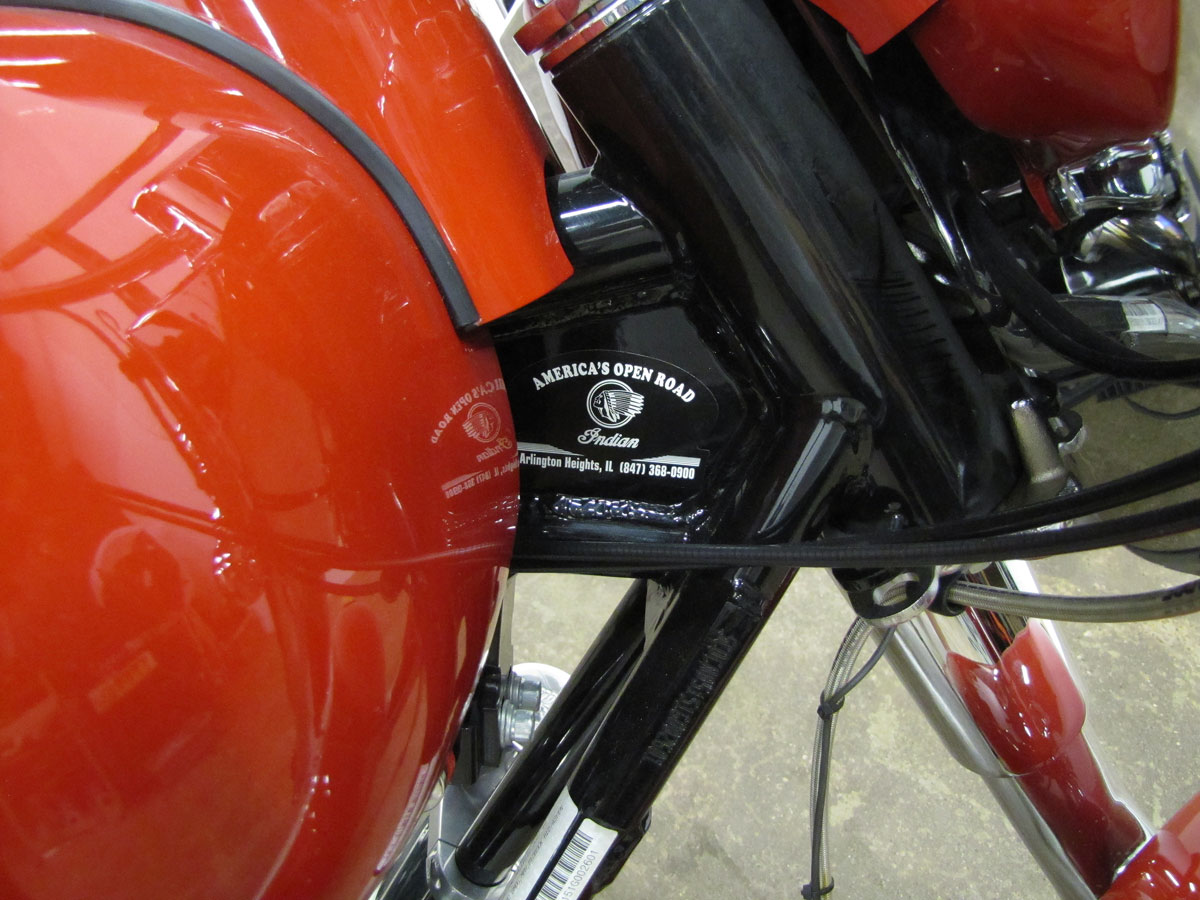
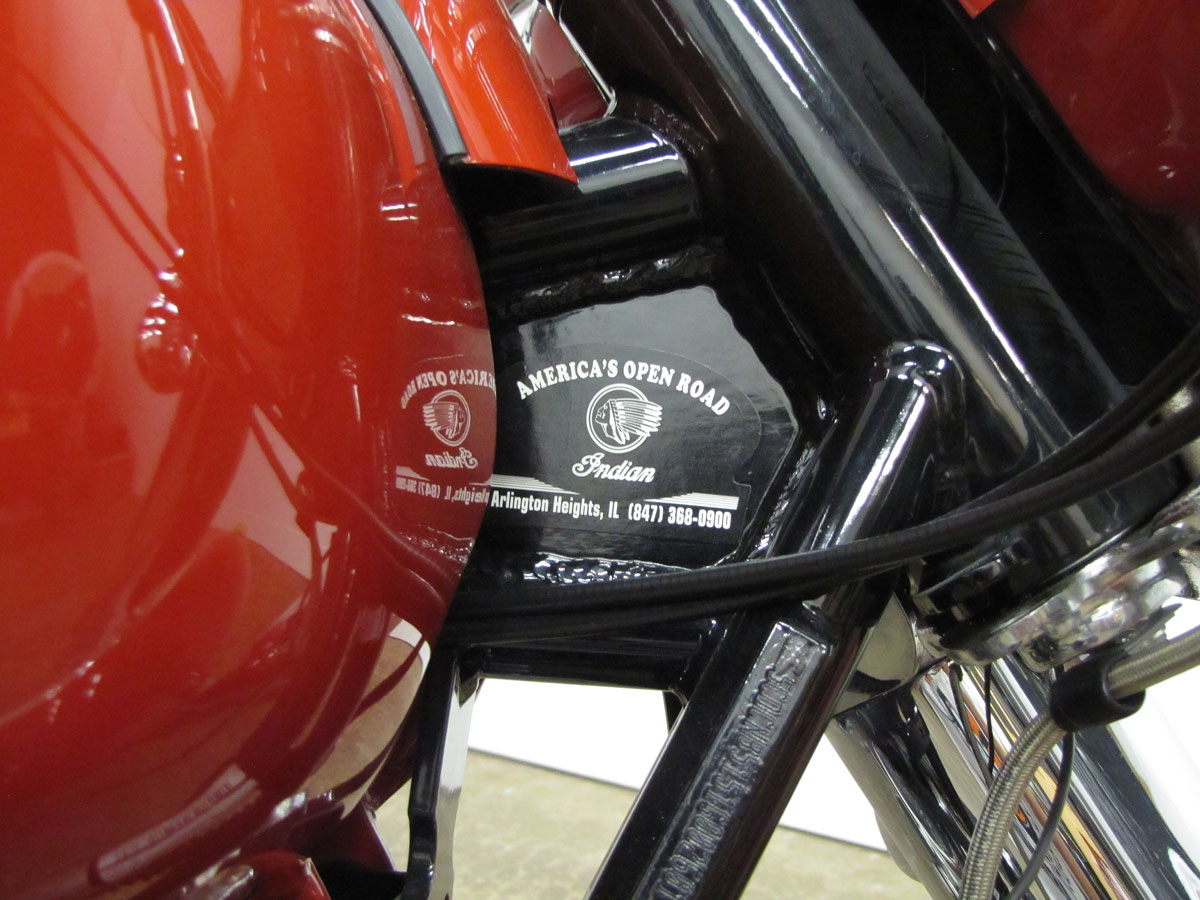
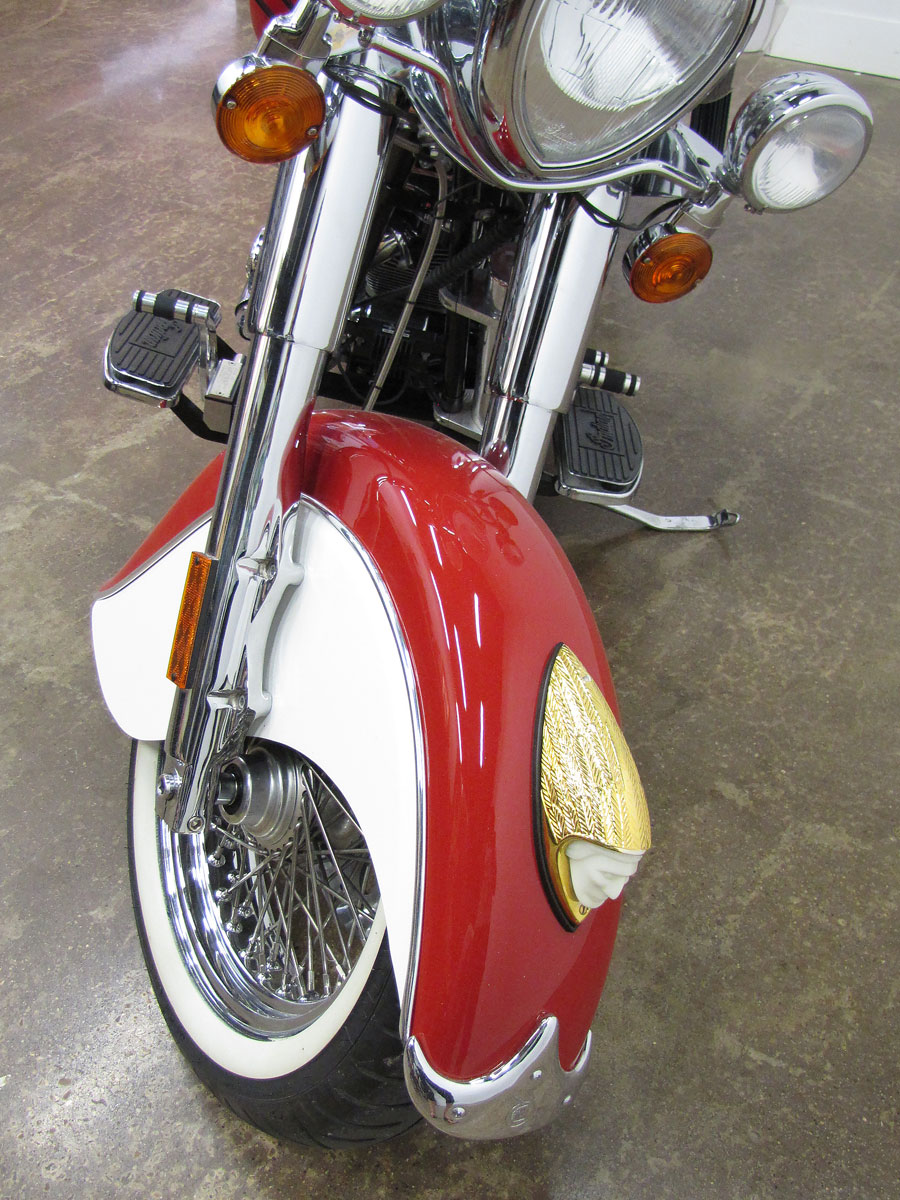
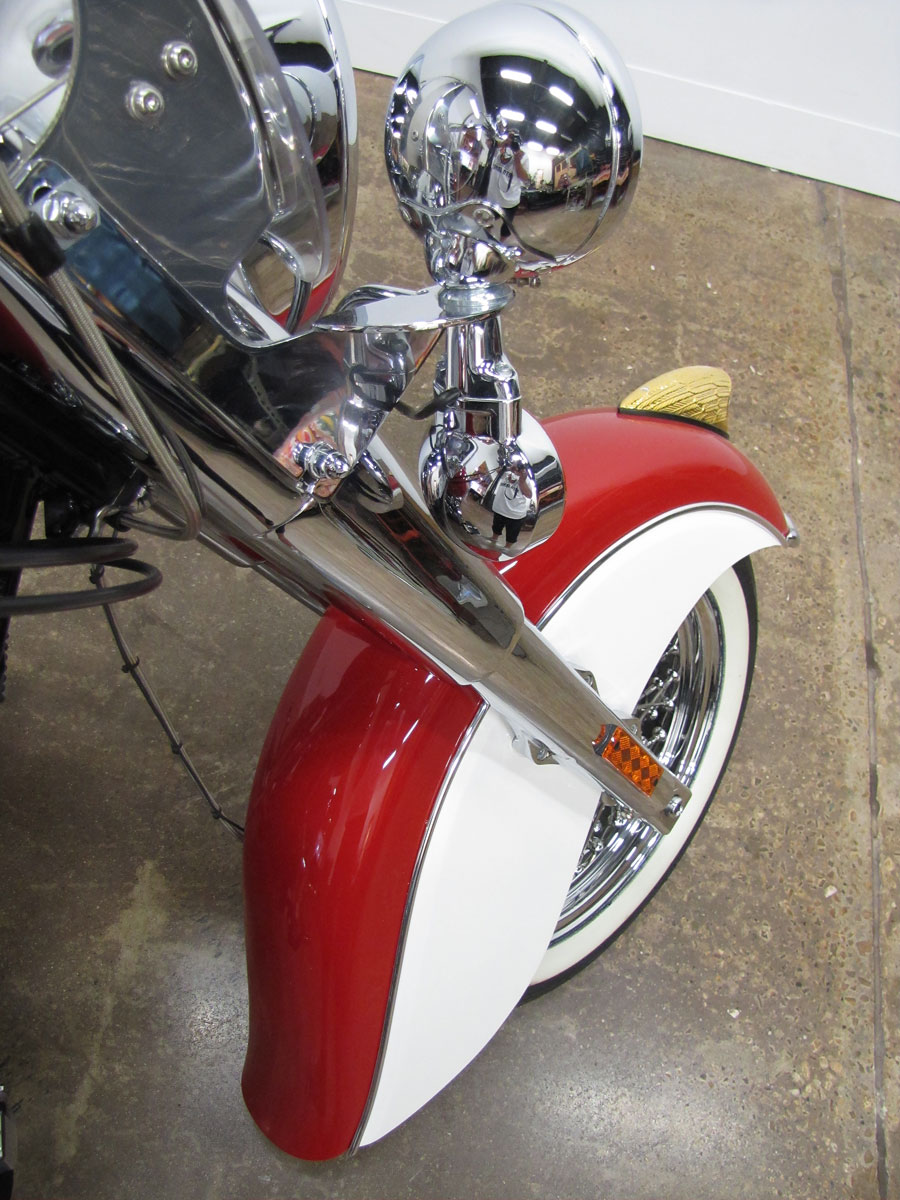
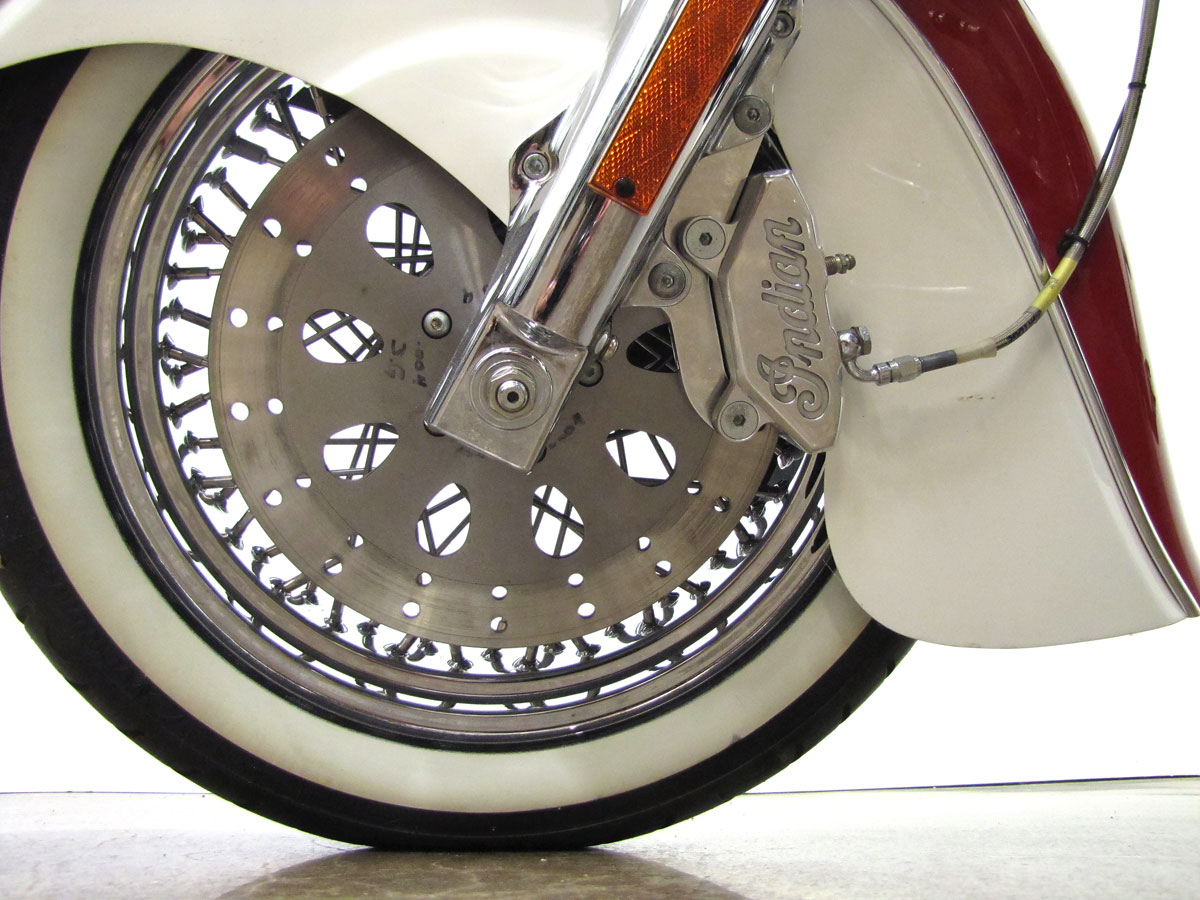
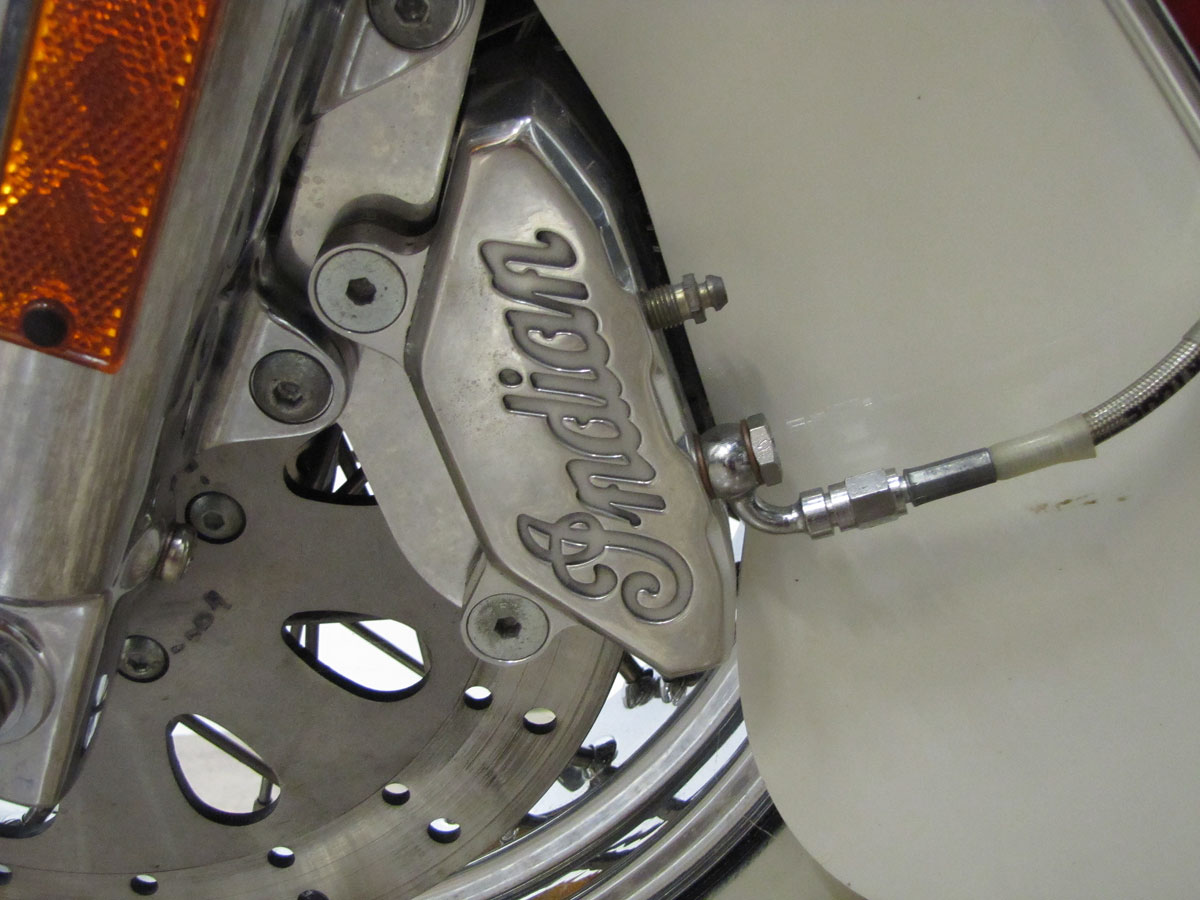
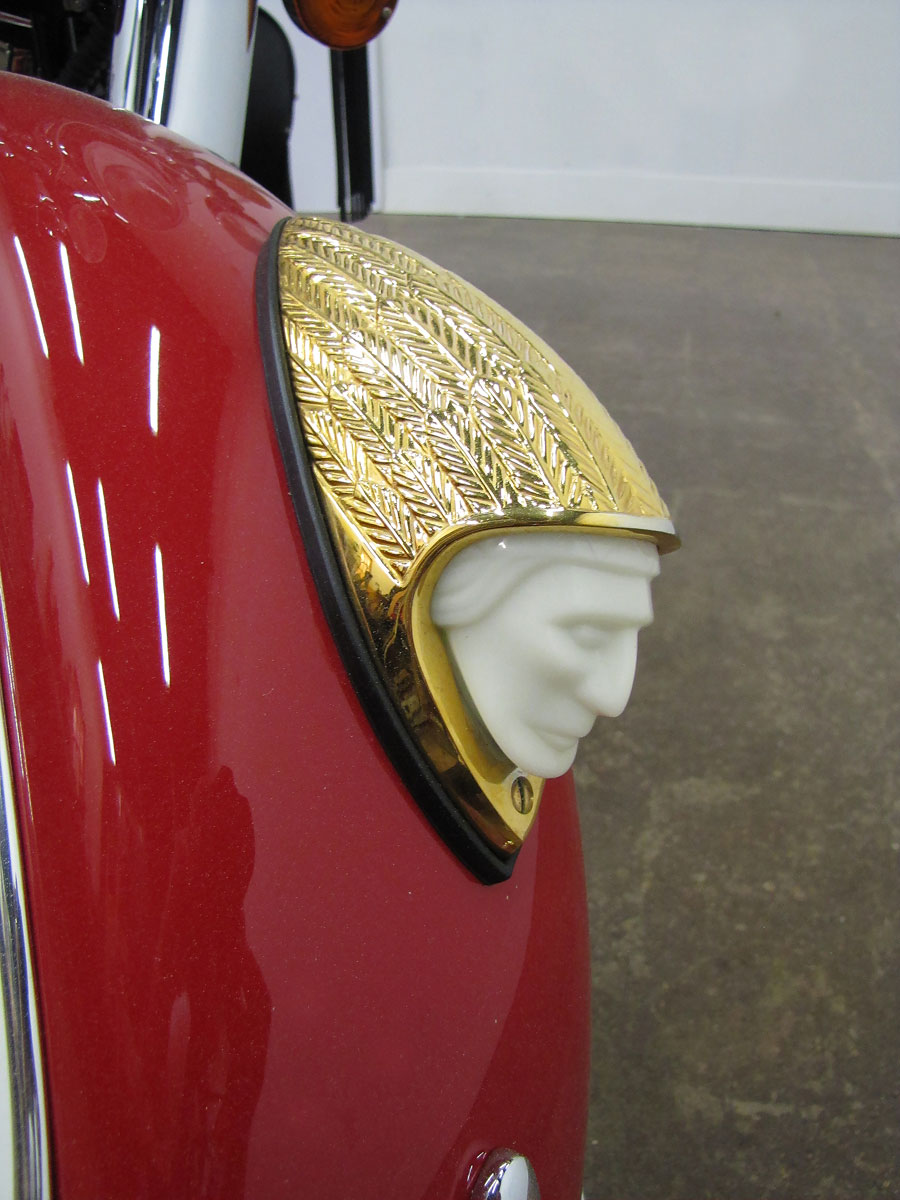
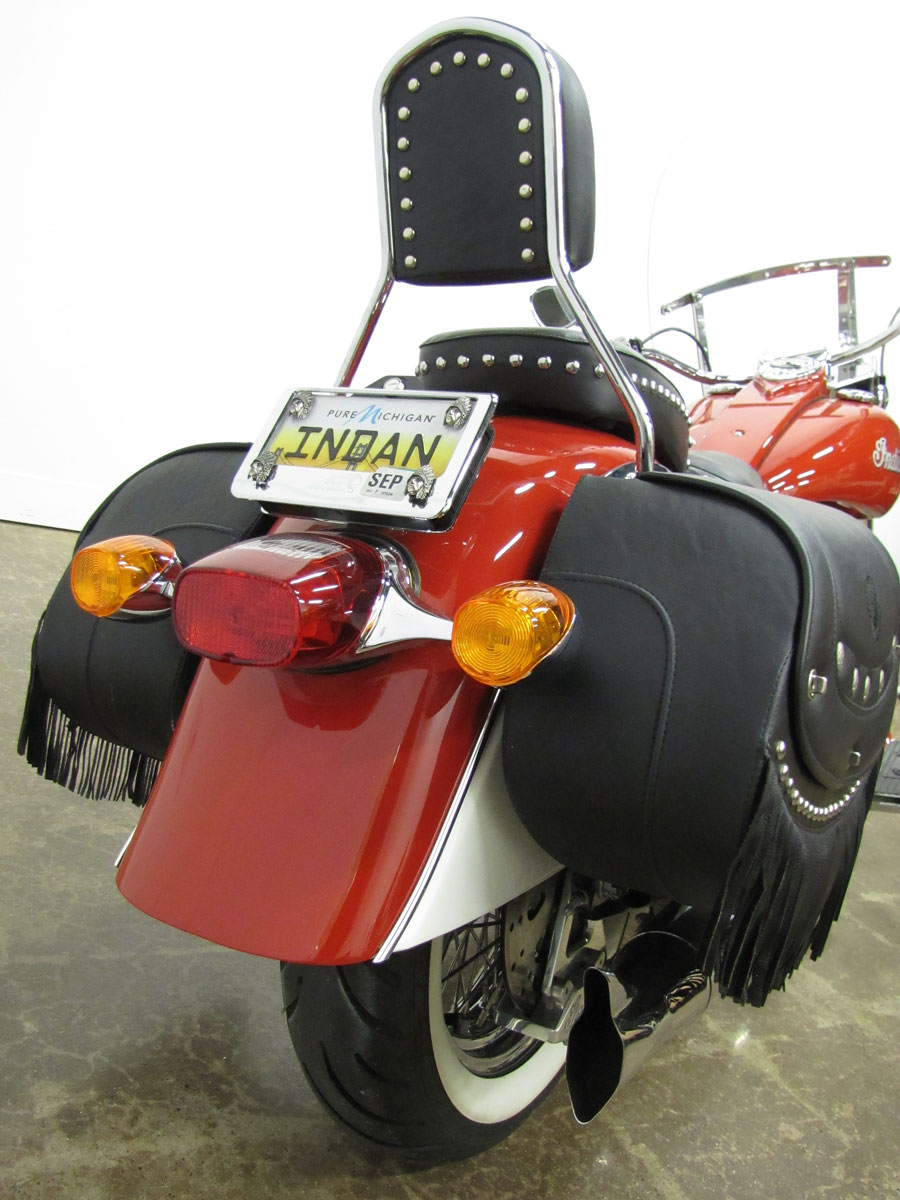
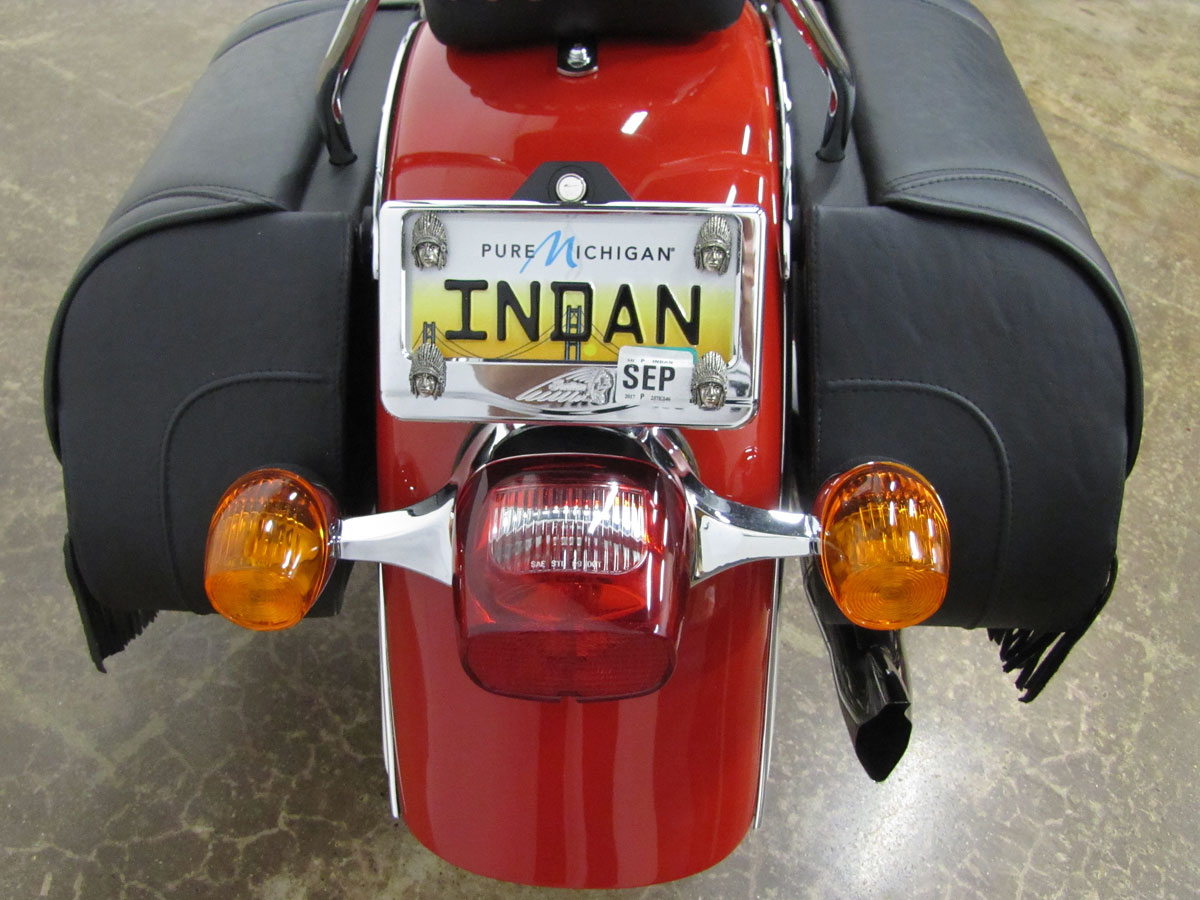
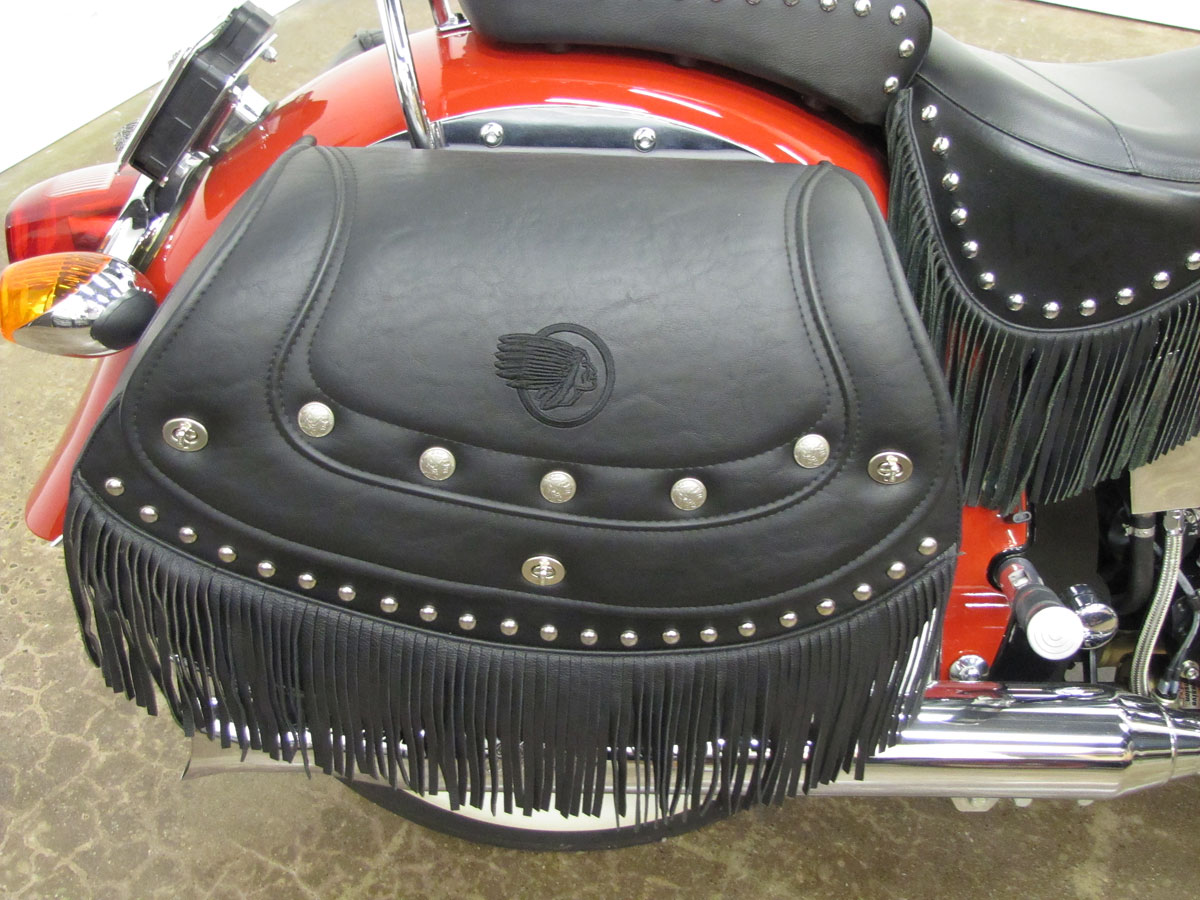
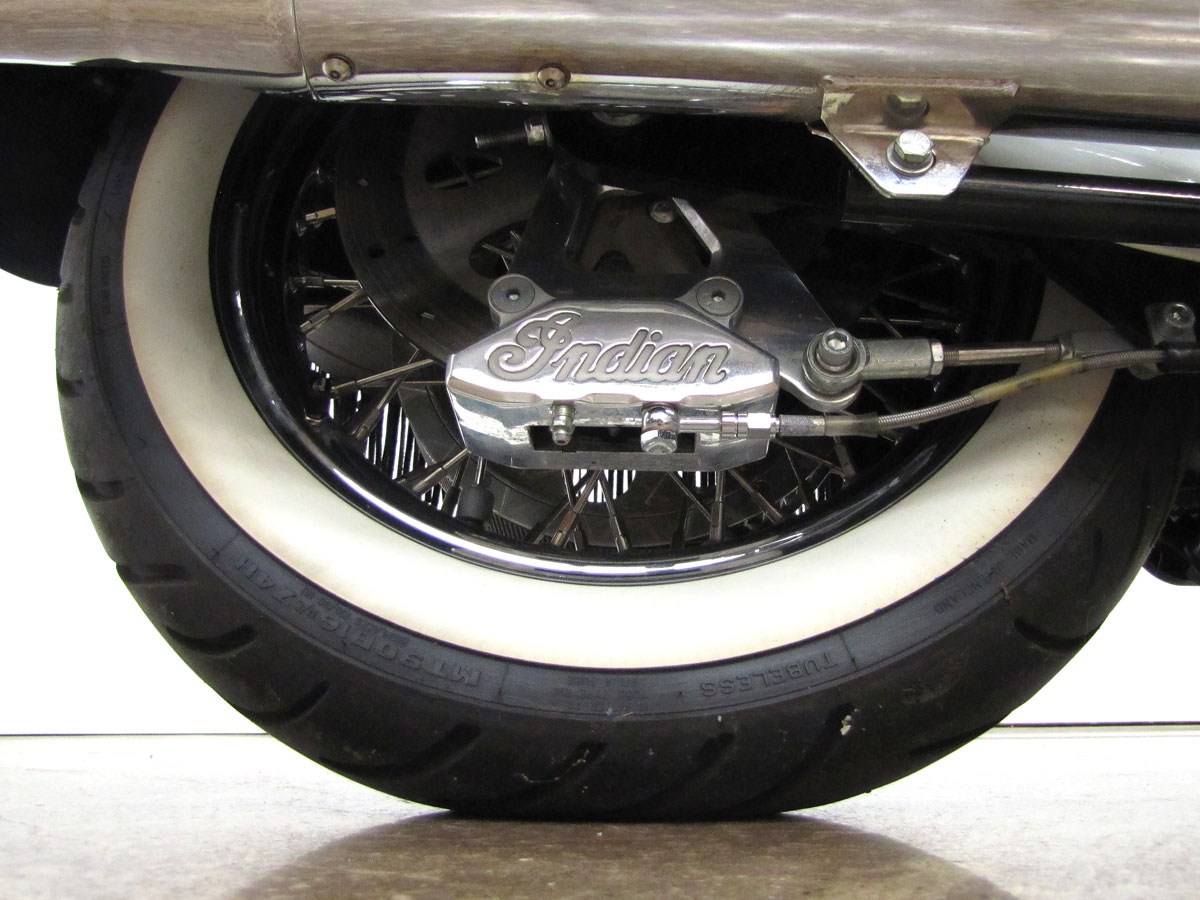
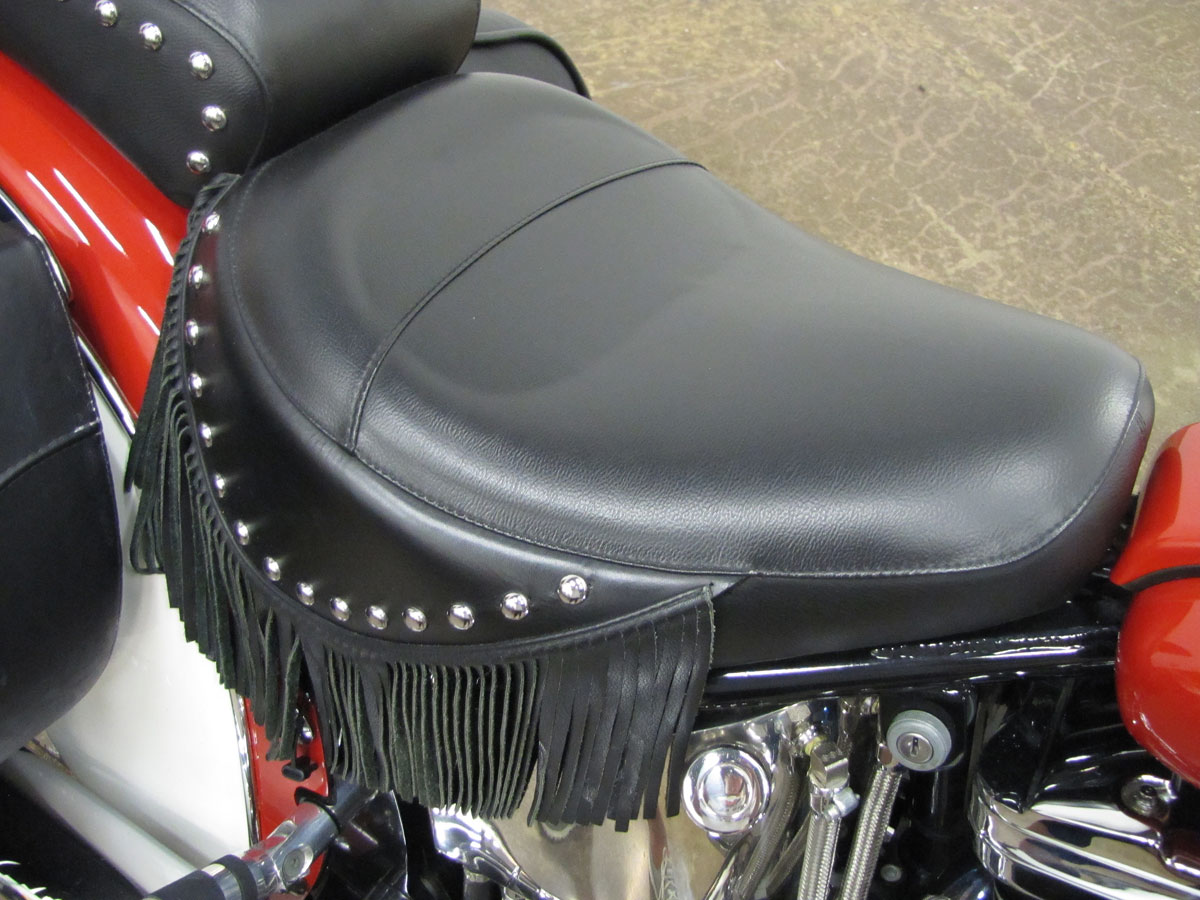
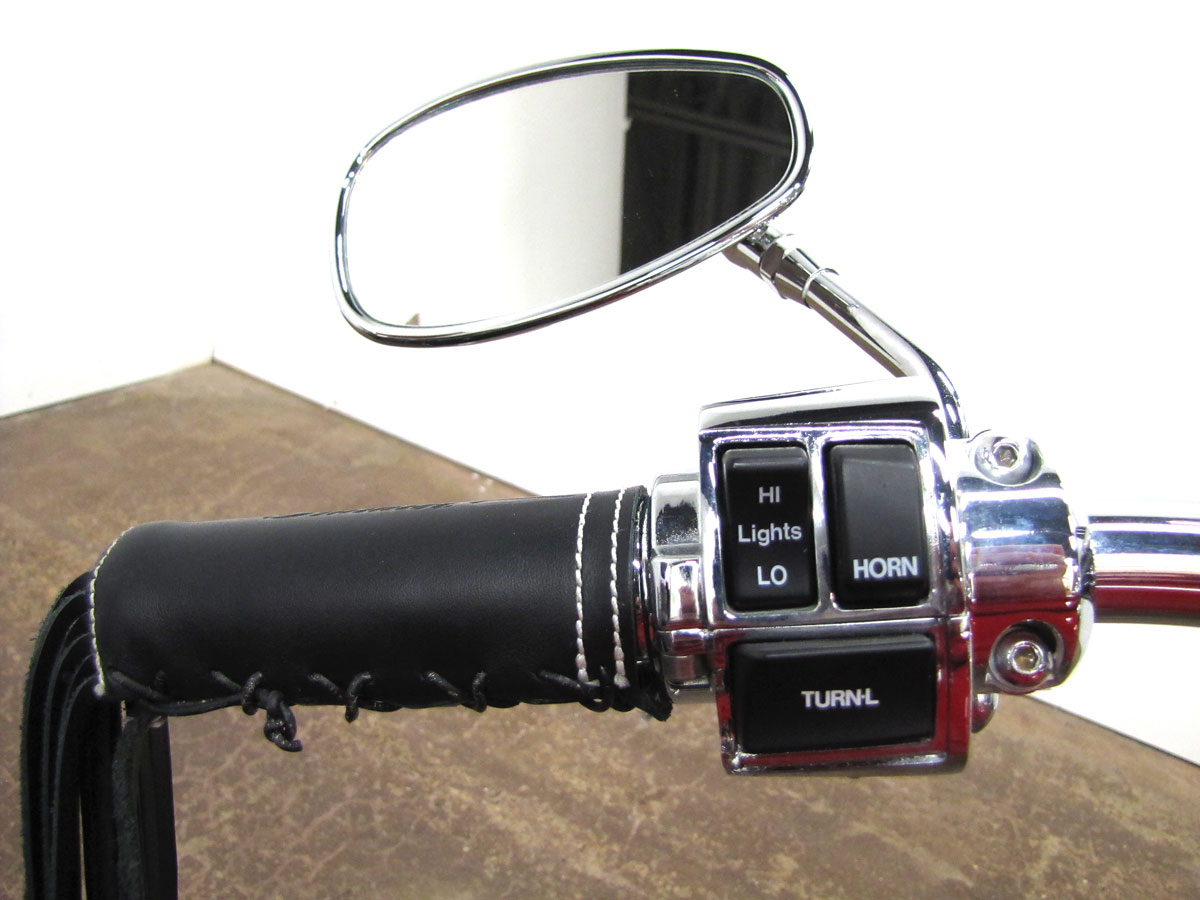
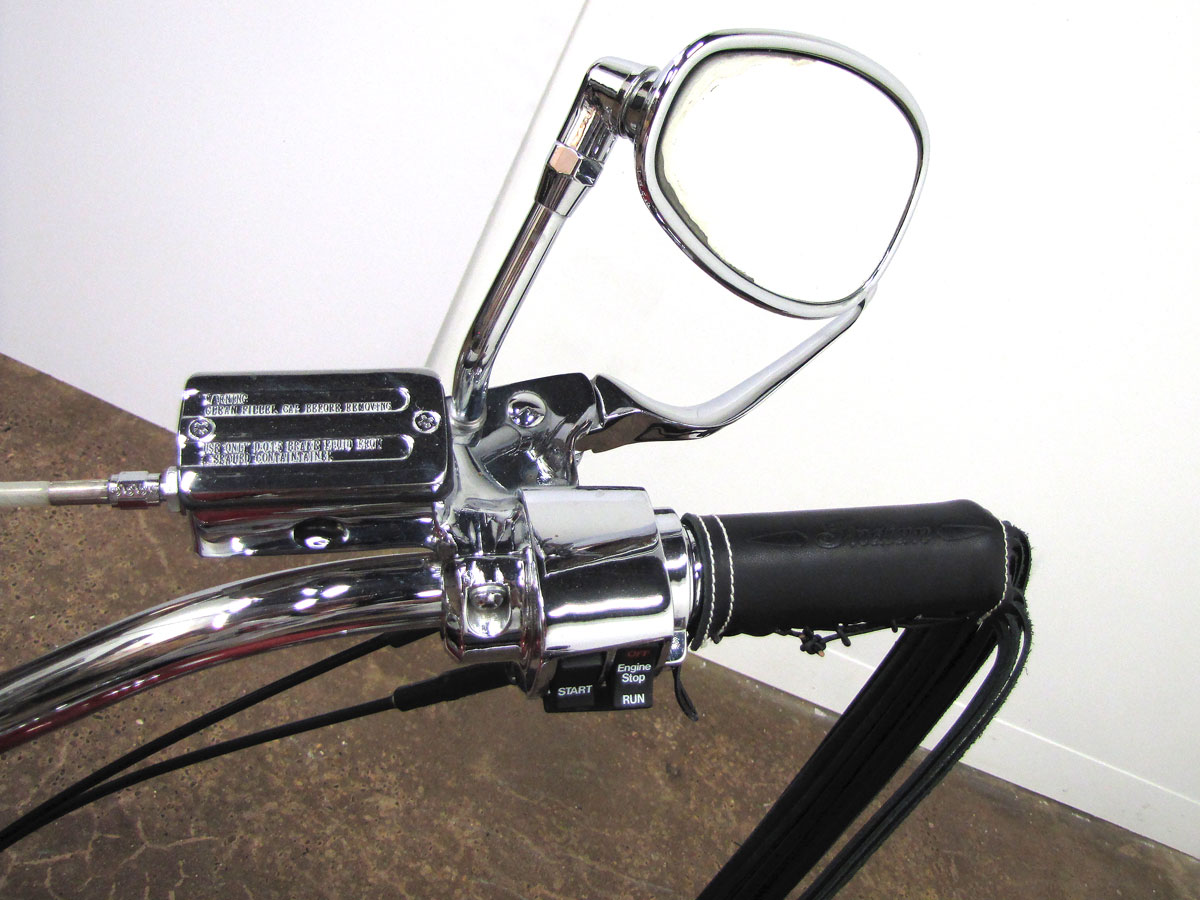
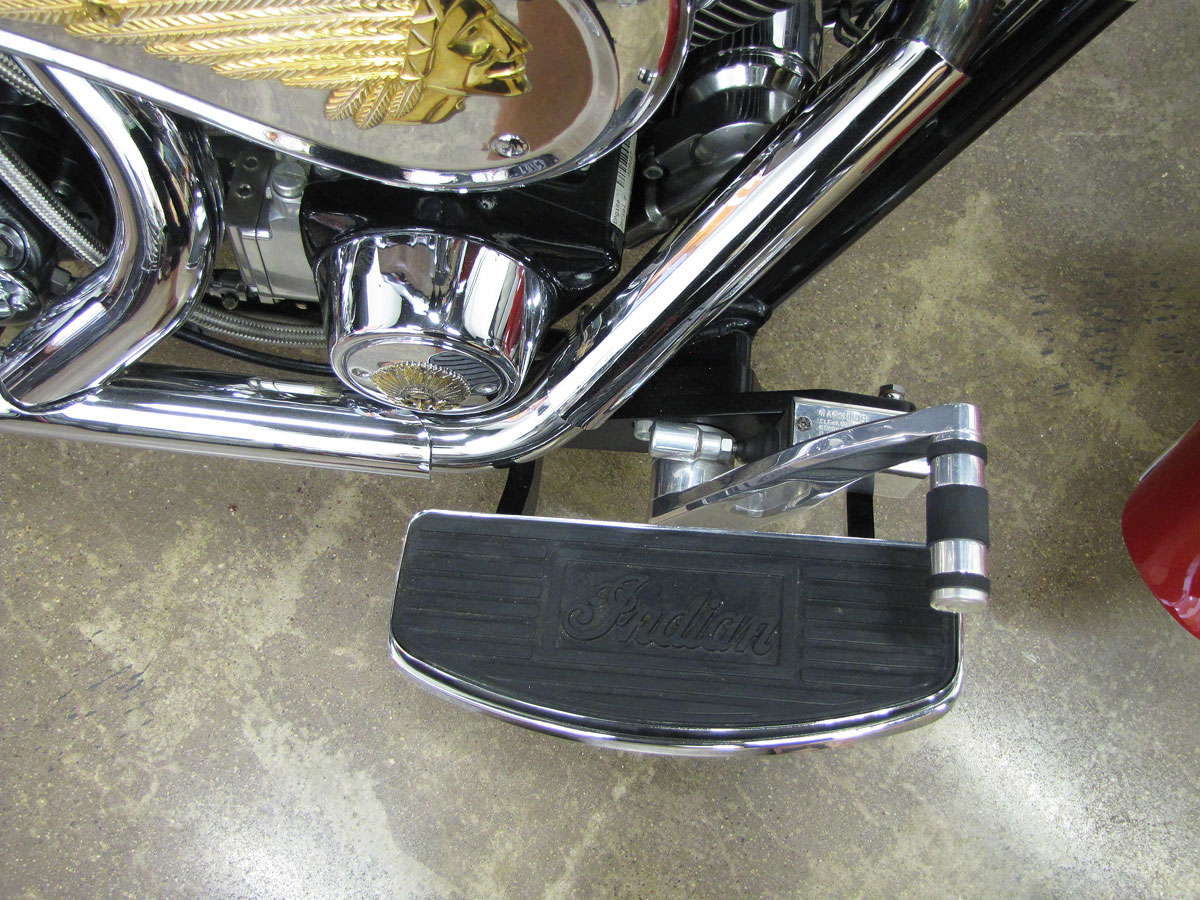
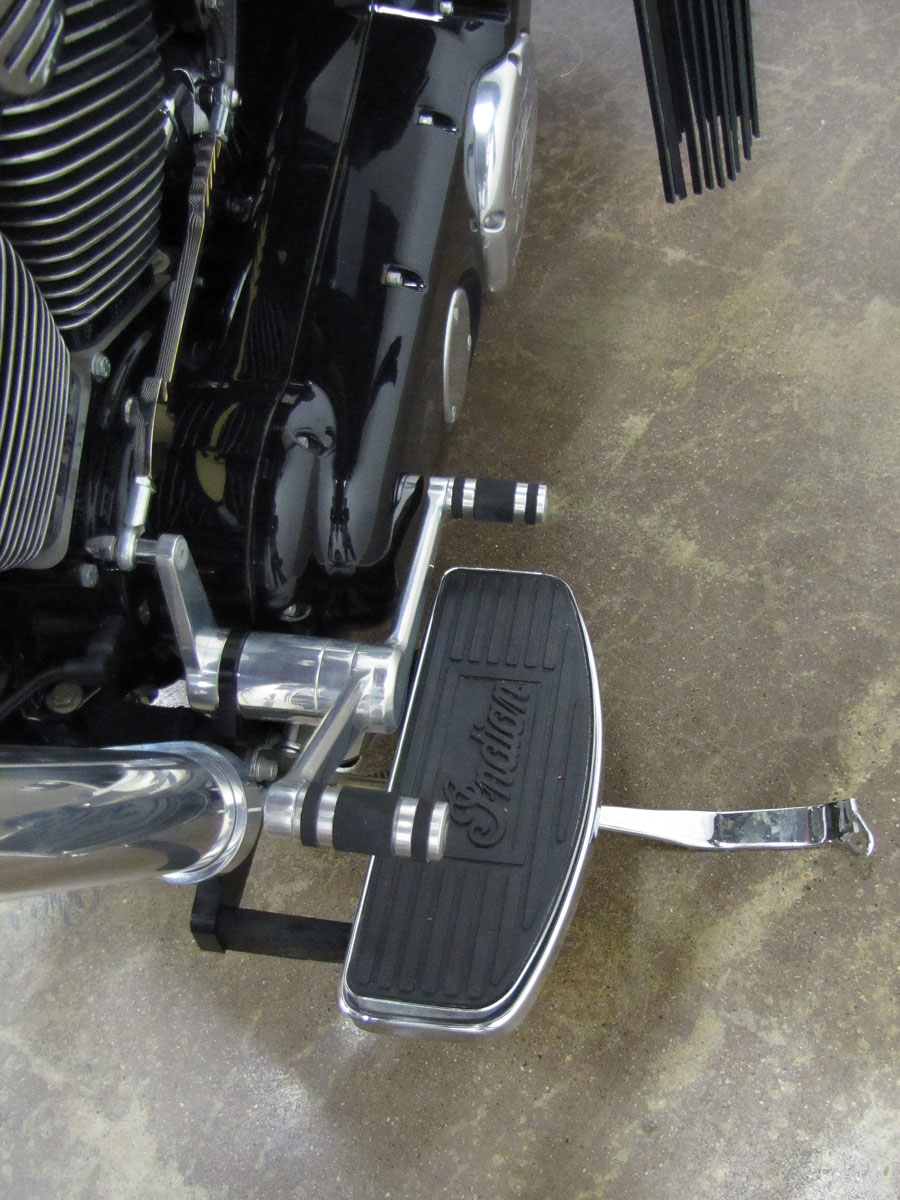
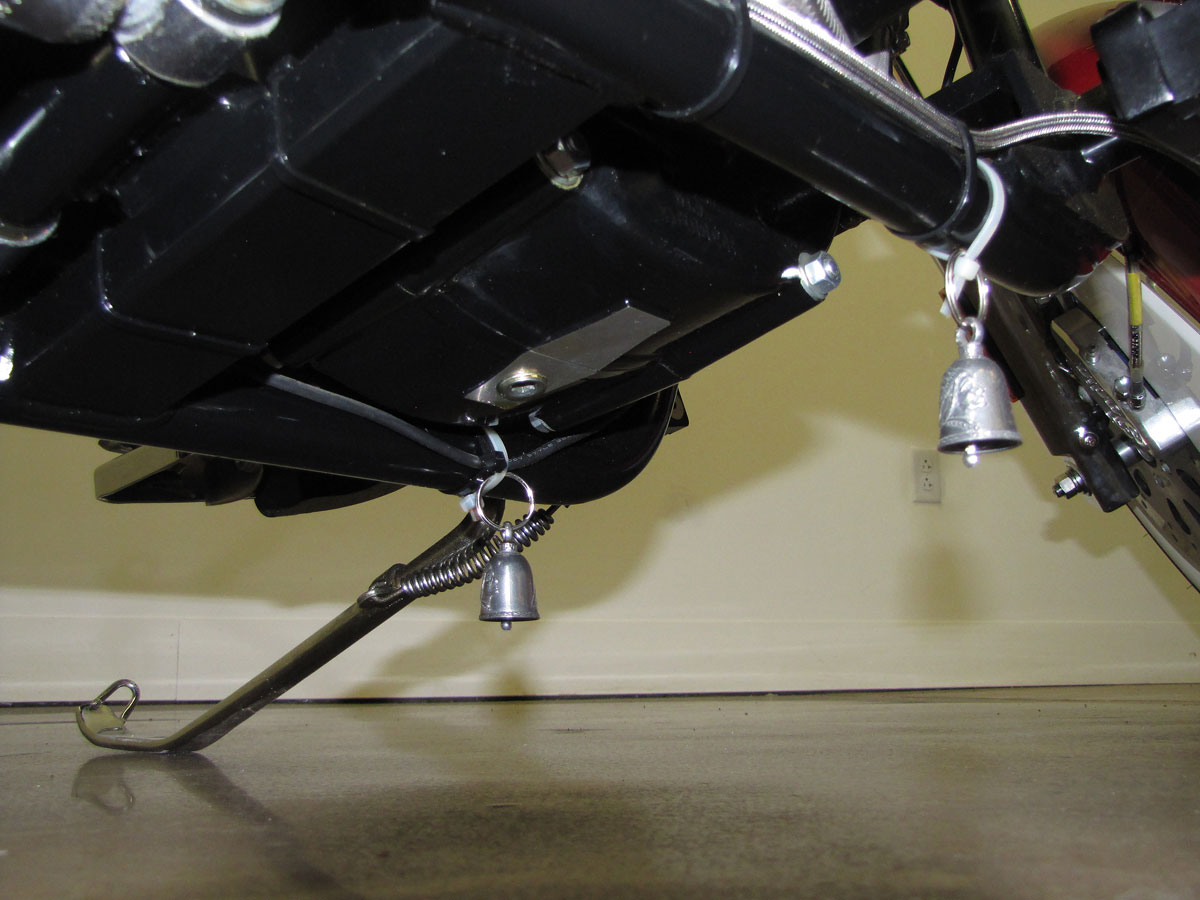
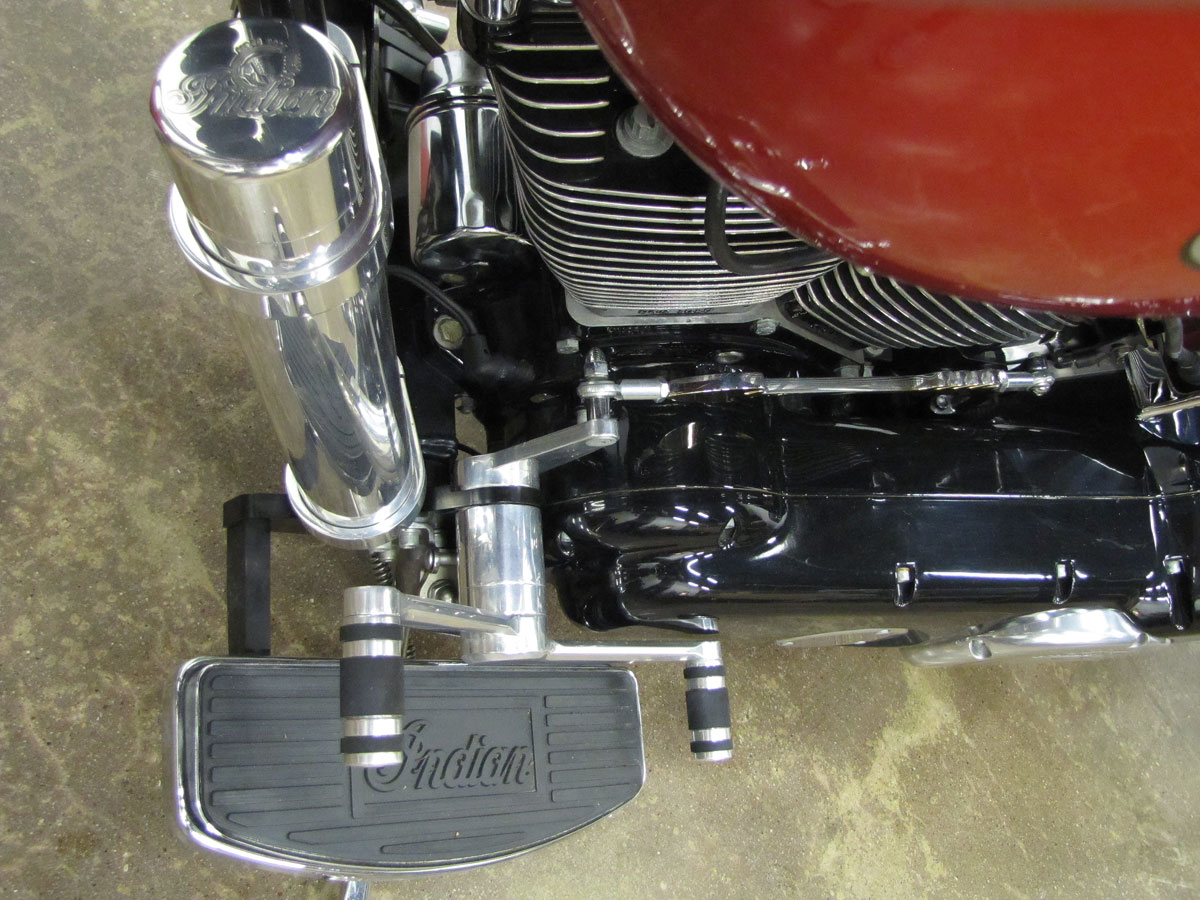
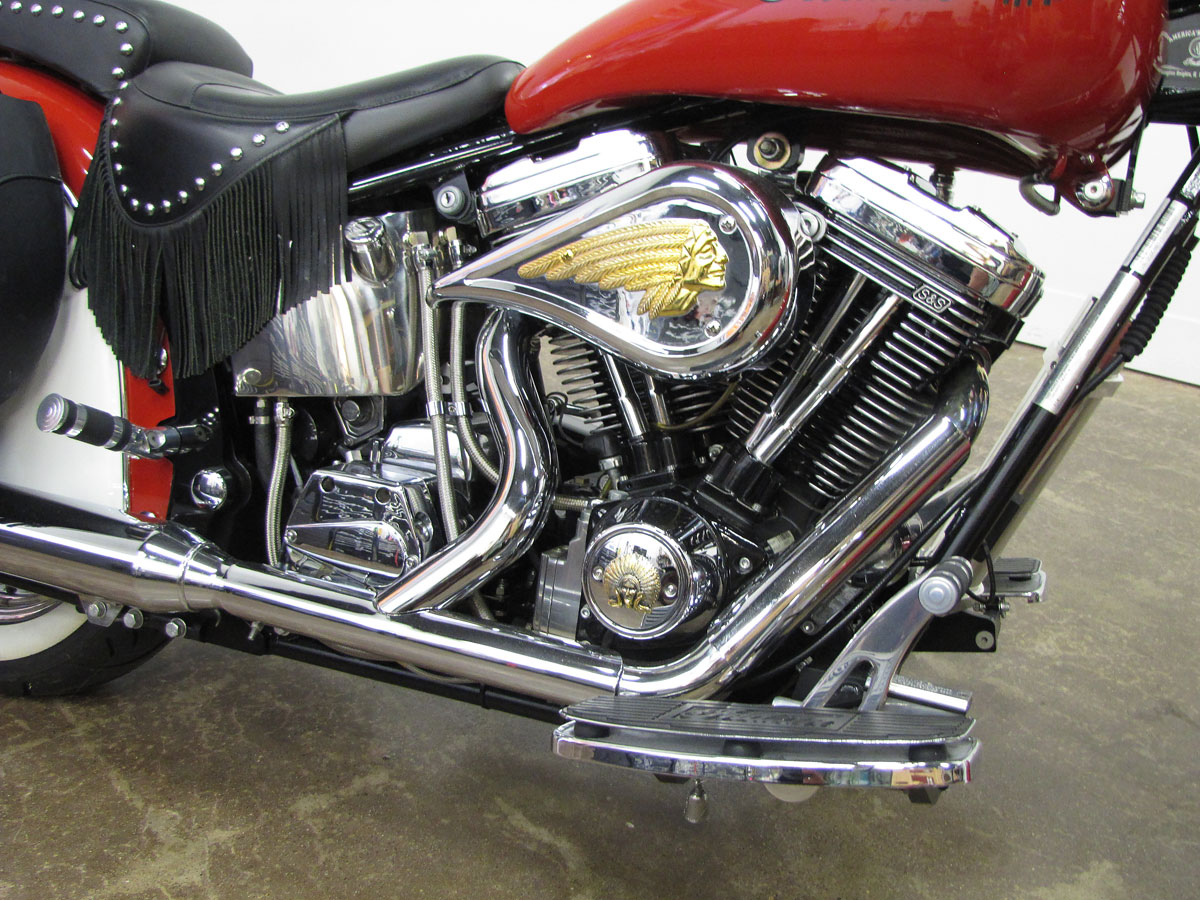
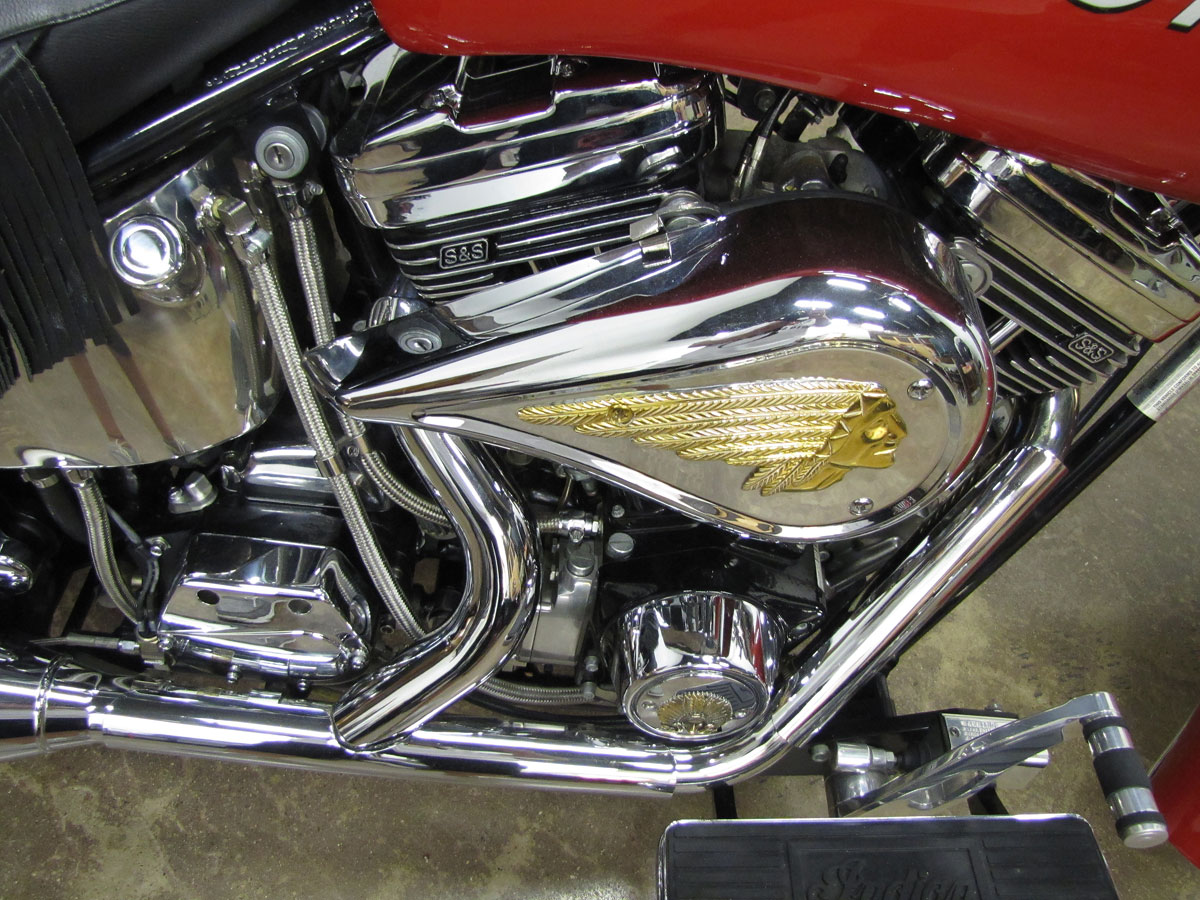
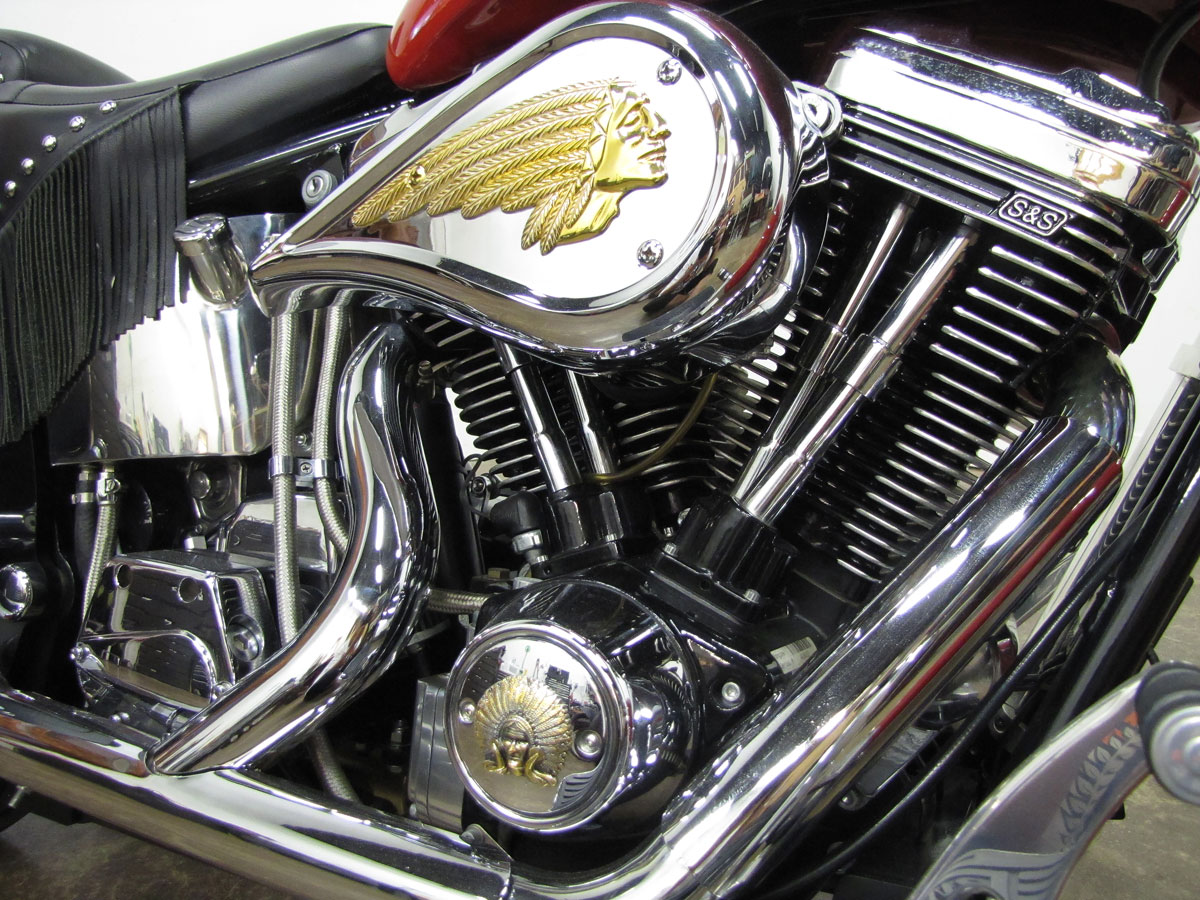
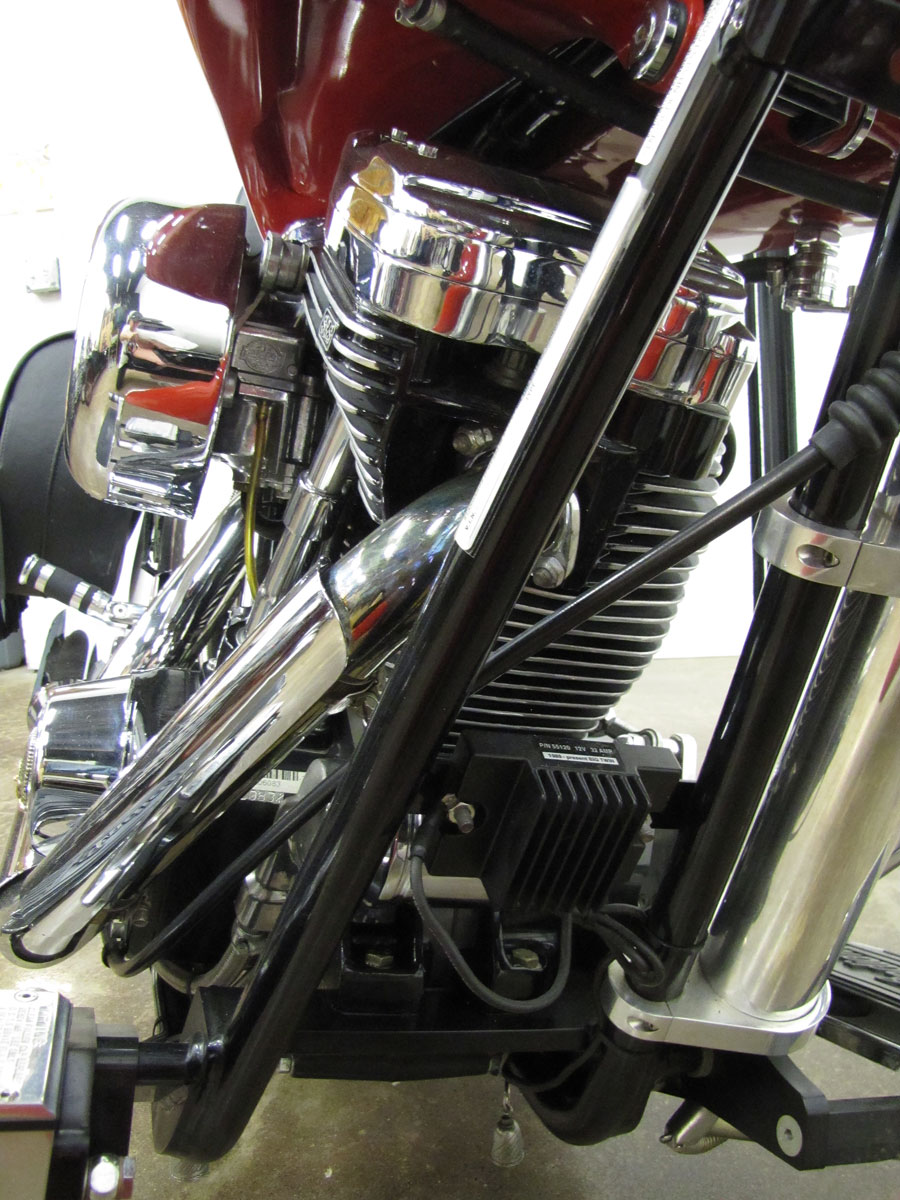
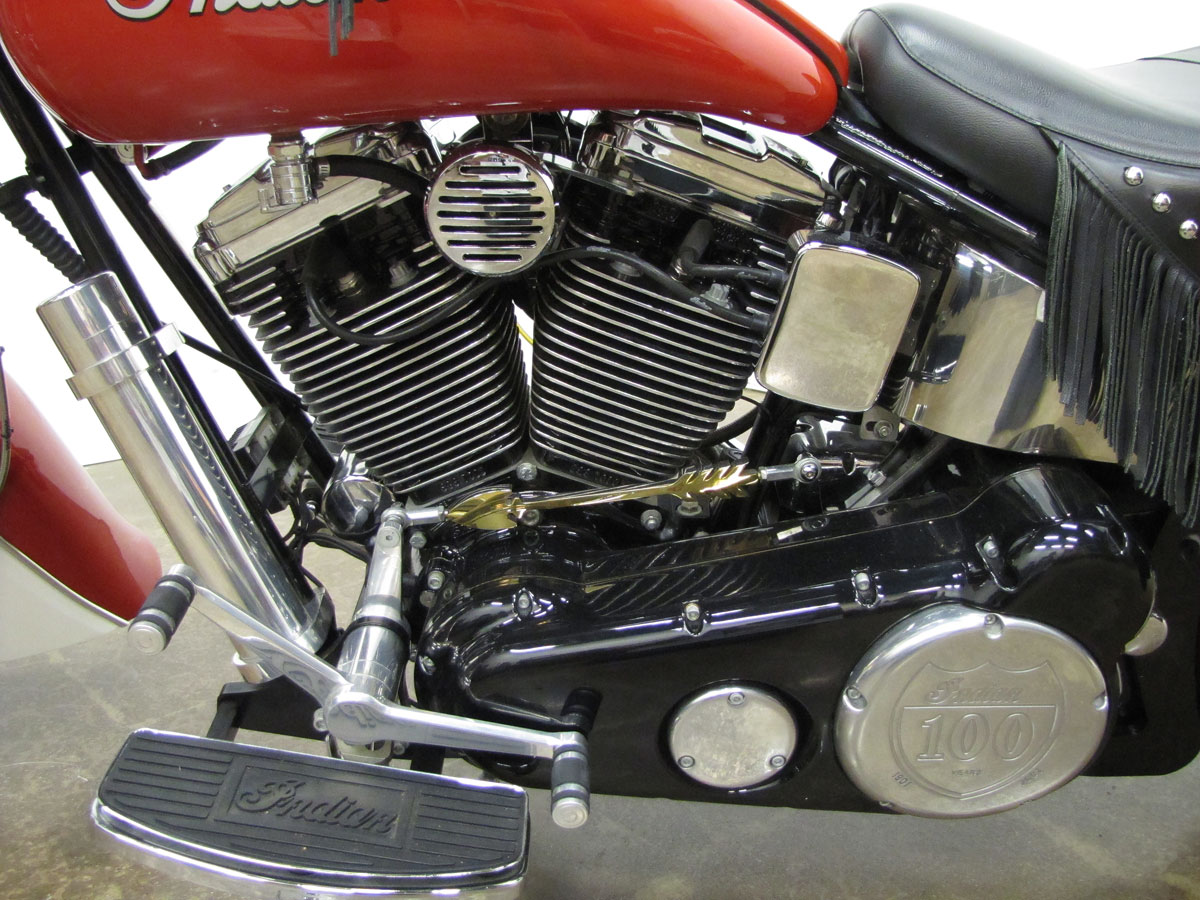
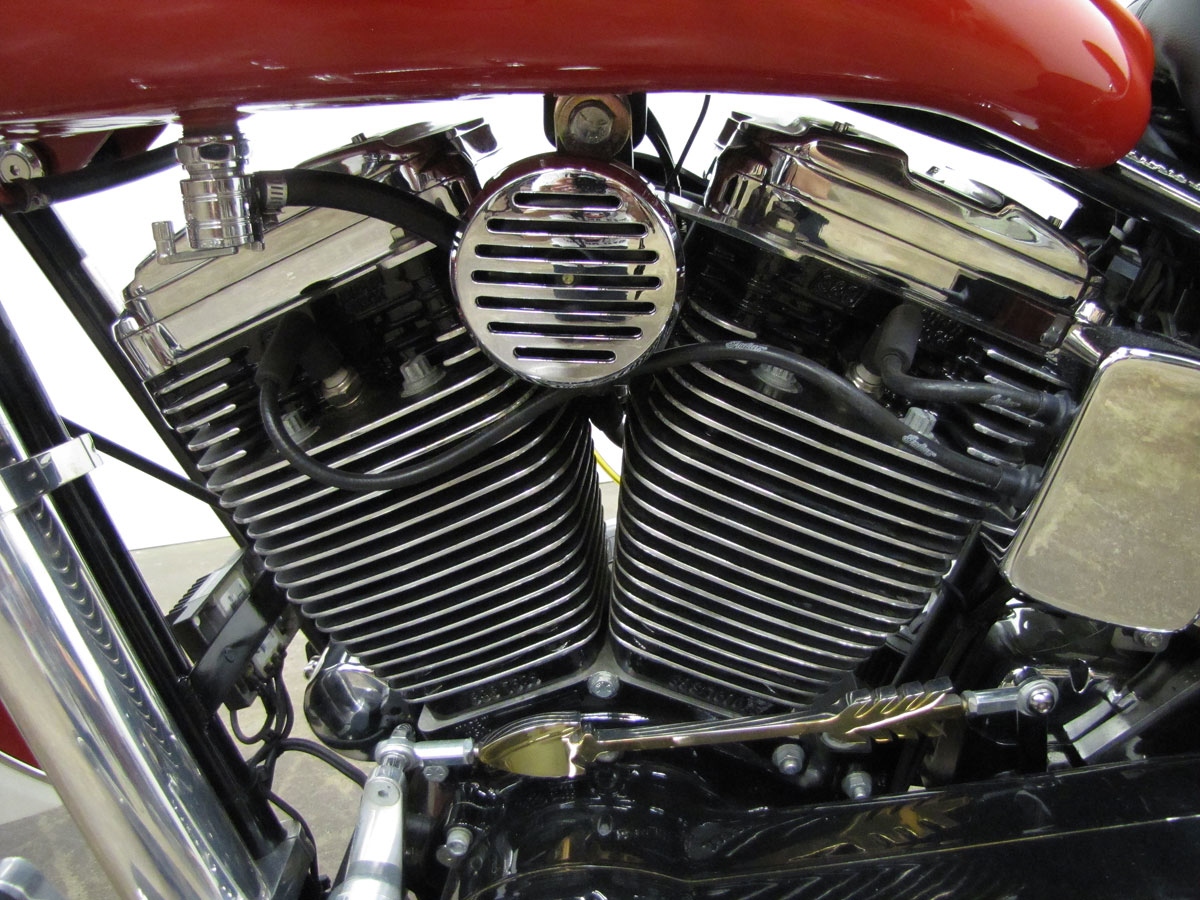
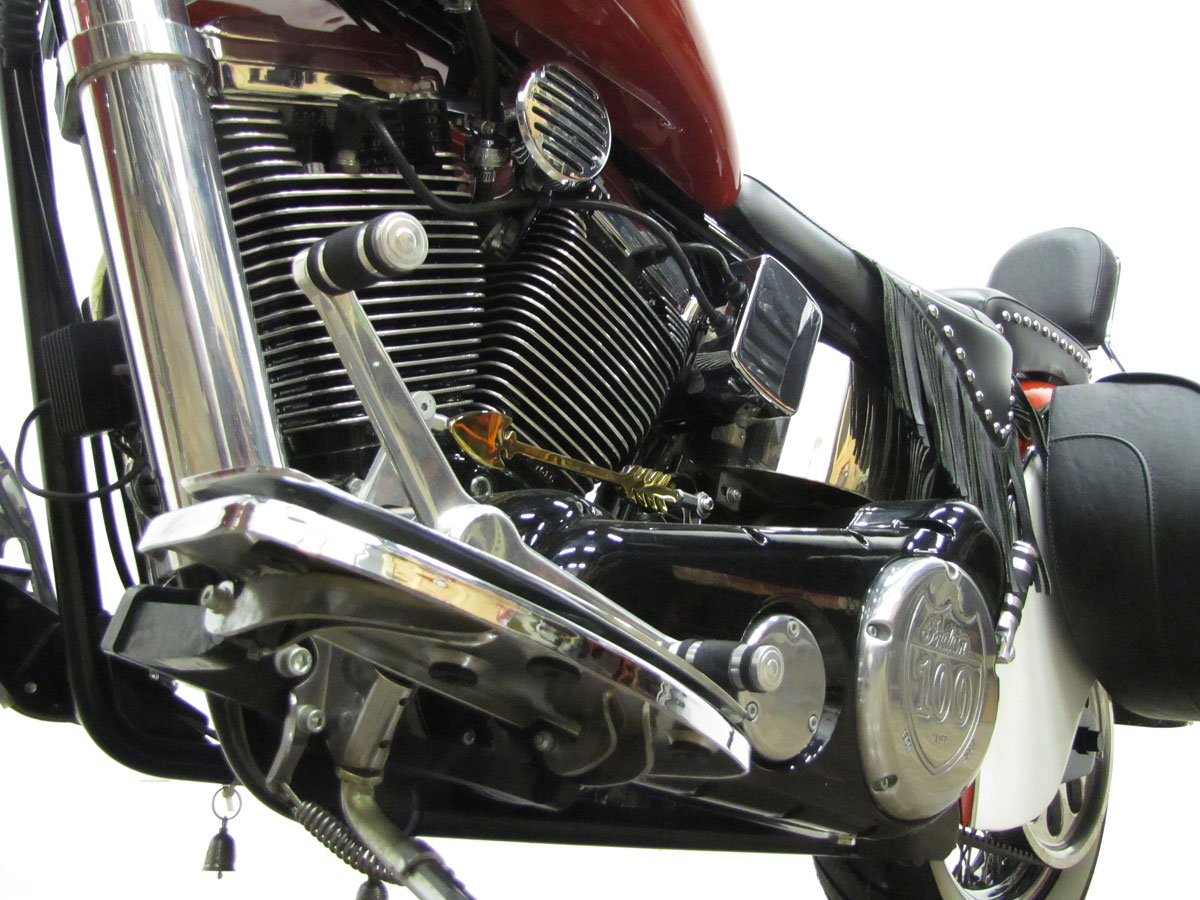
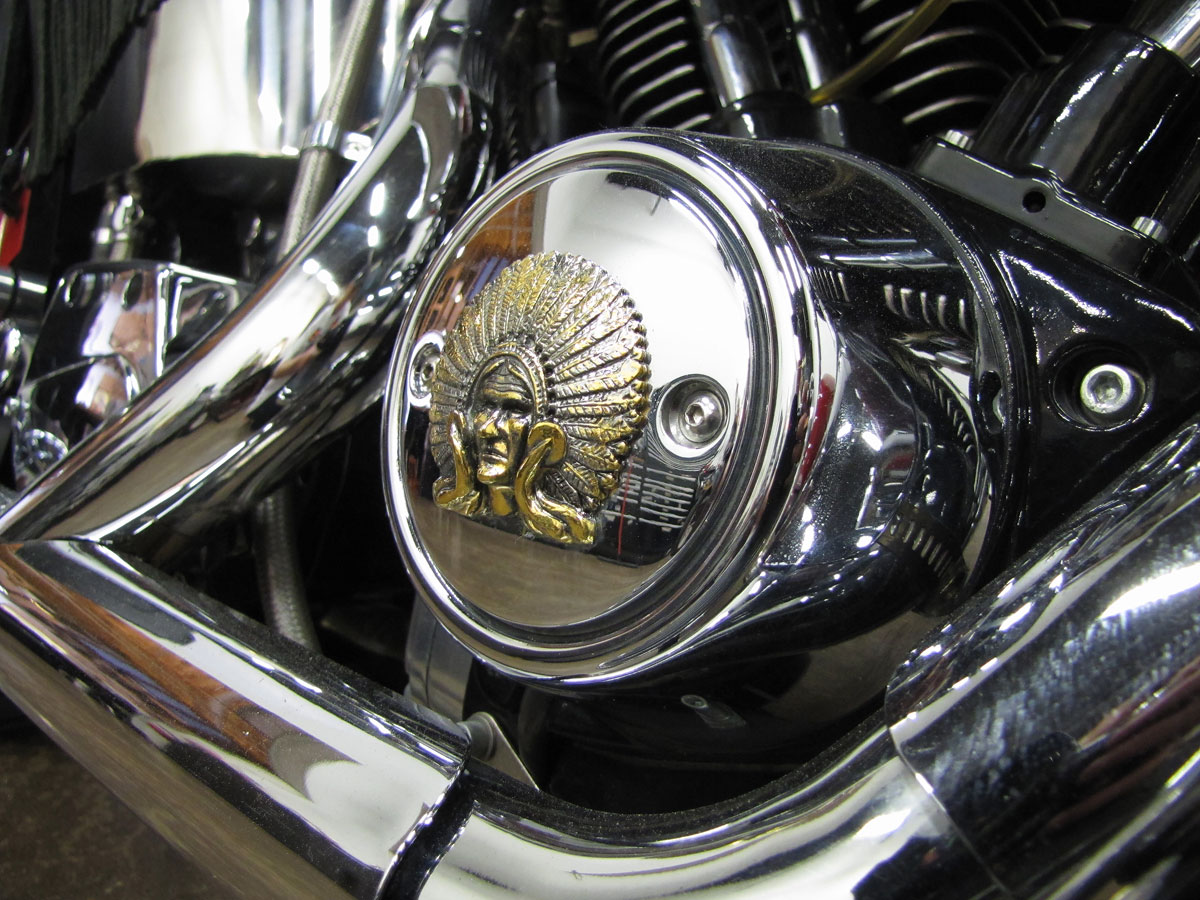
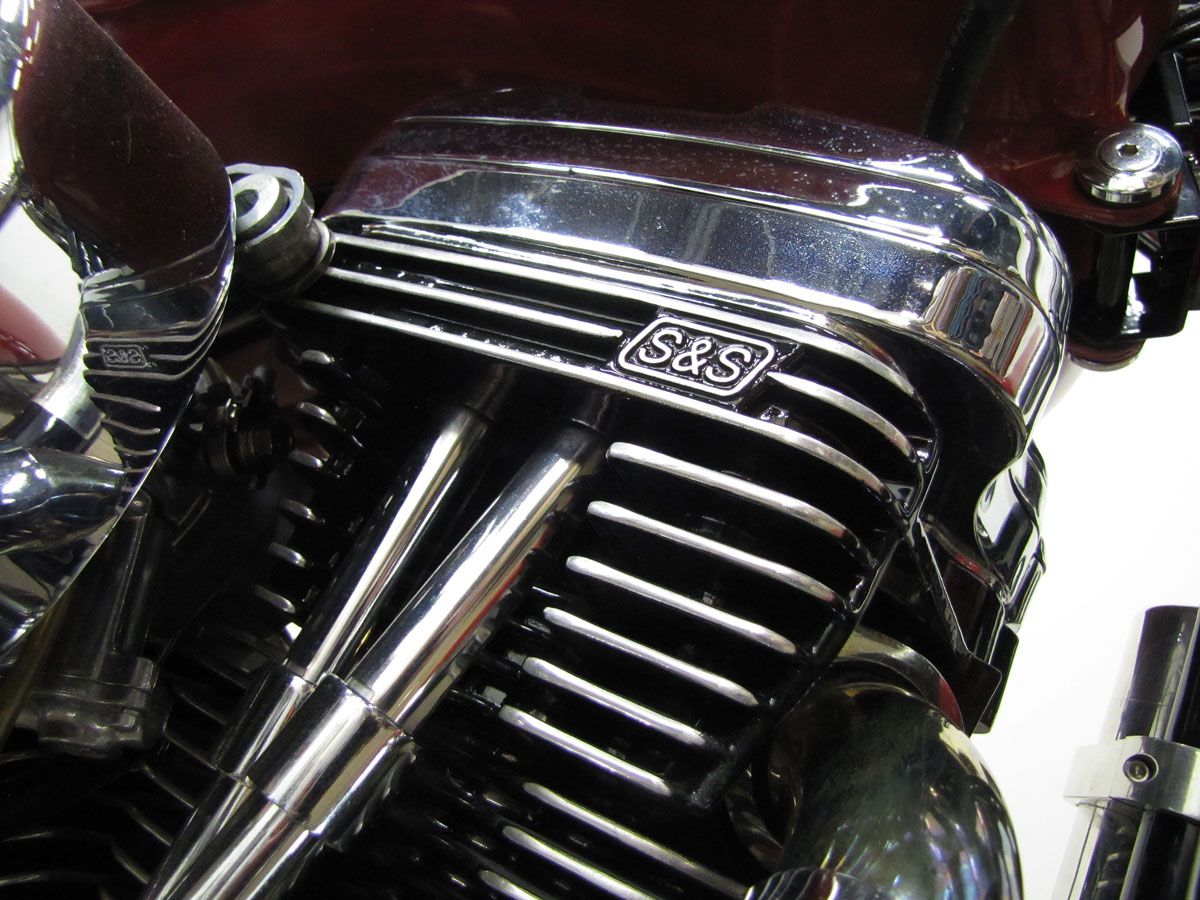
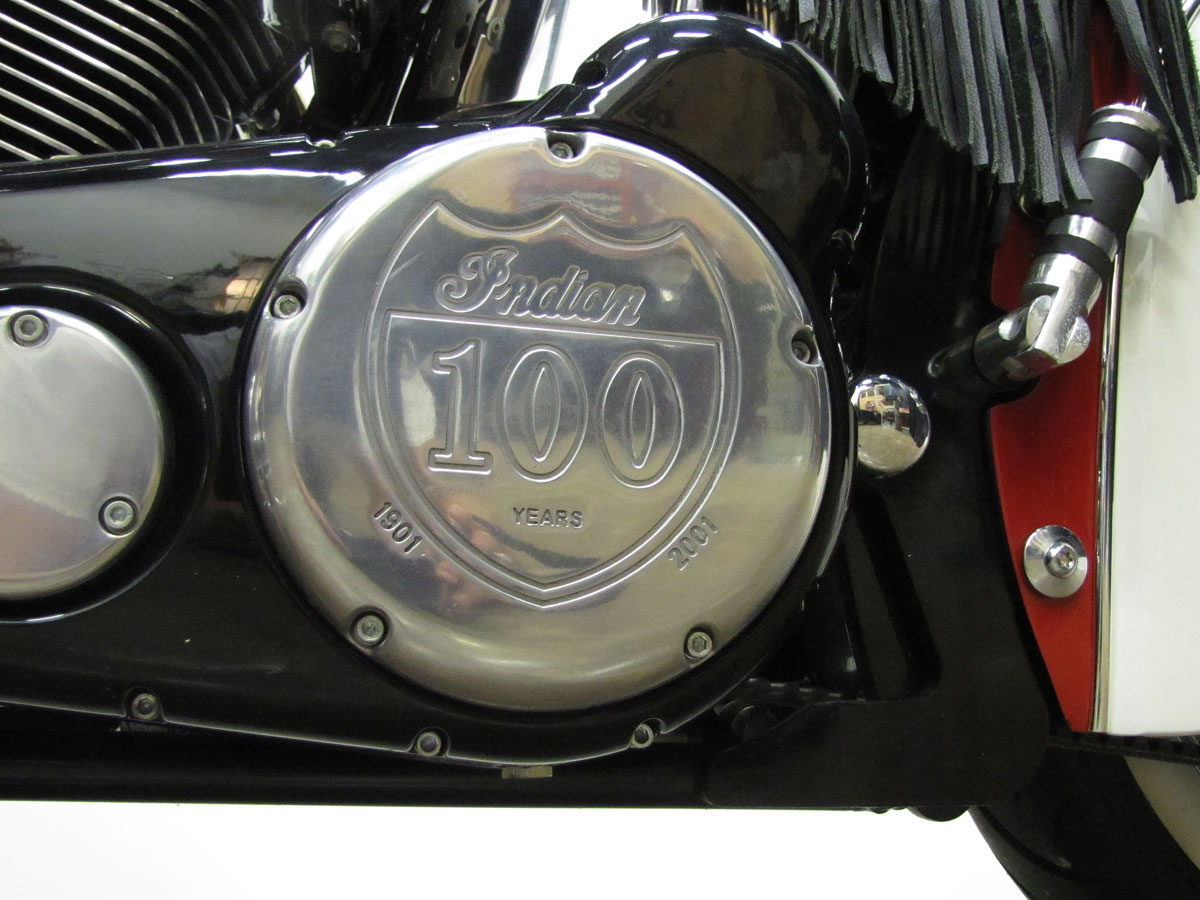
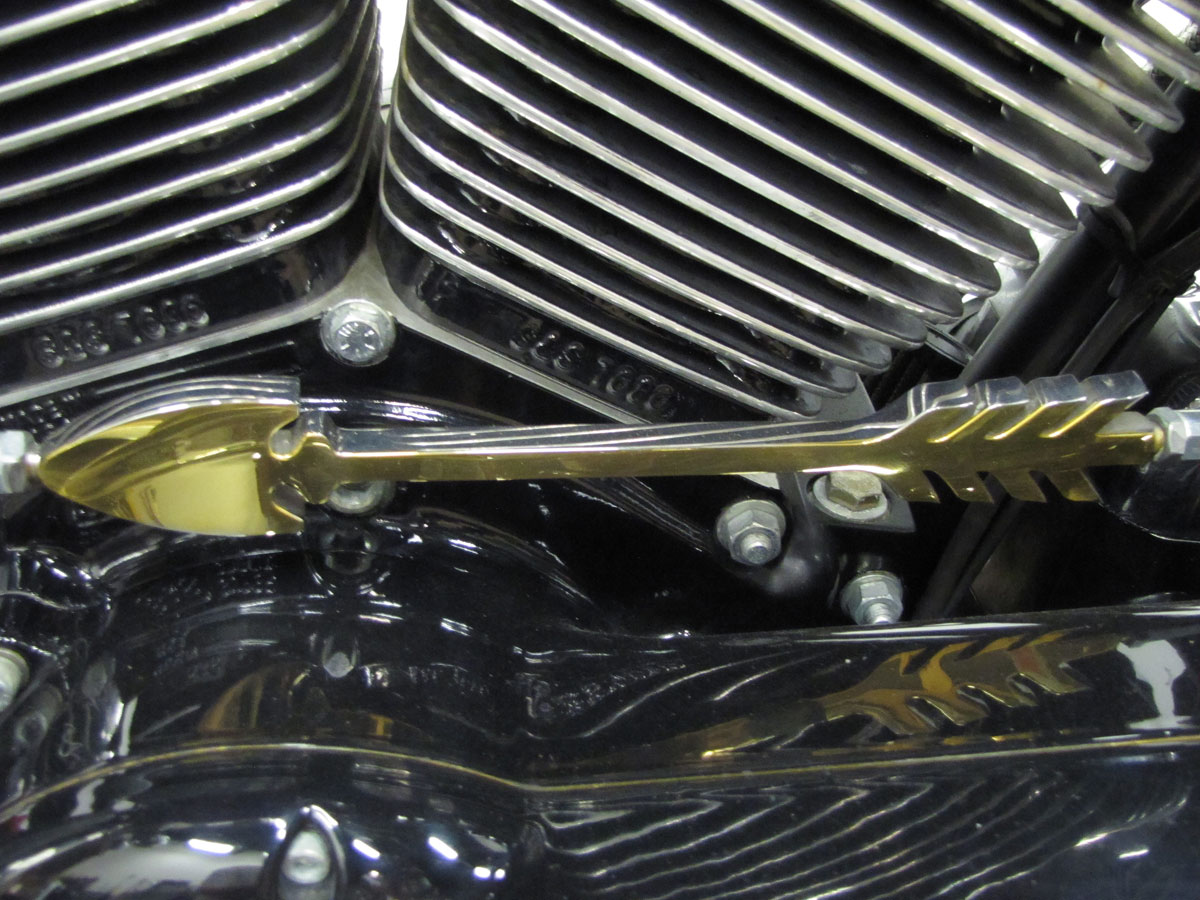
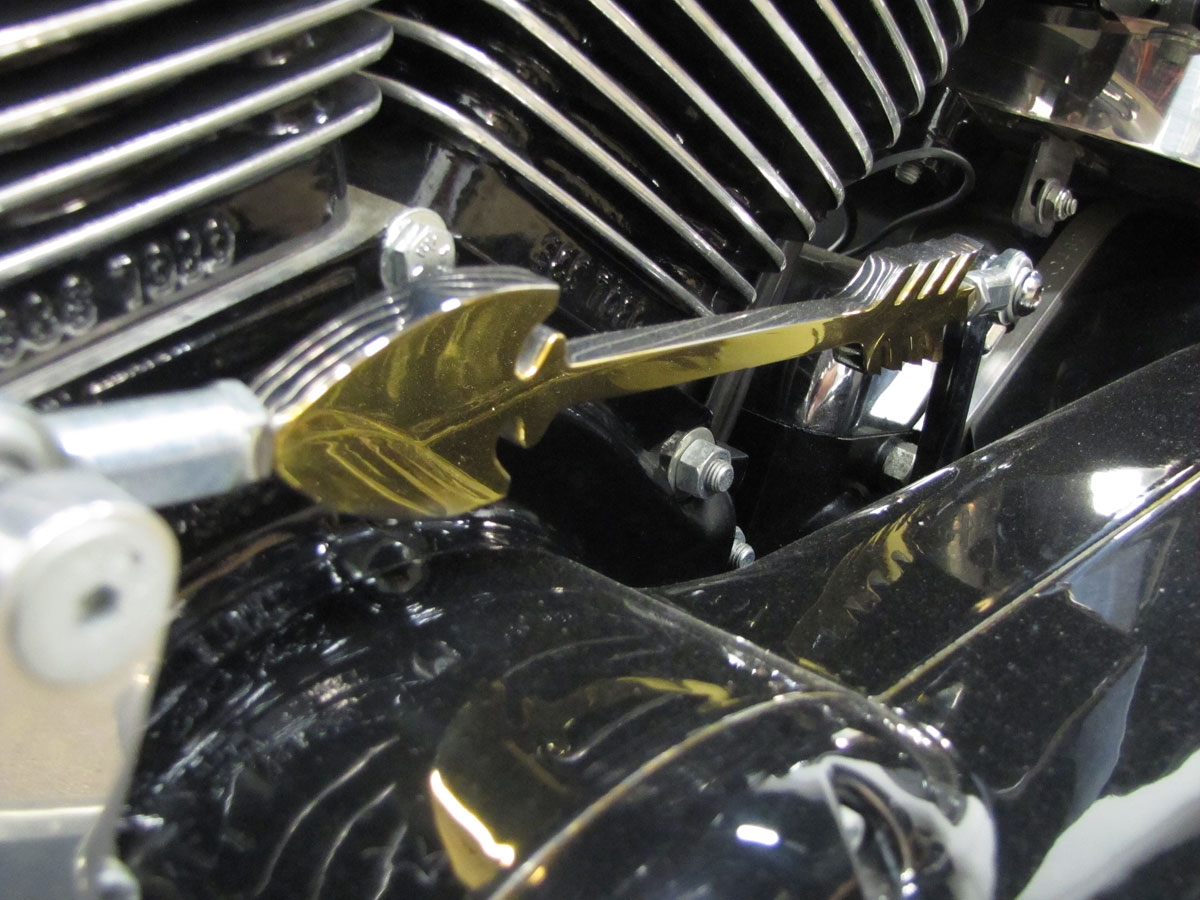
Thank you Mr. Kenney for donating this beautiful Indian. I plan to visit this musuem one day and will look for this bike. Its is absolutely gorgeous.
Interesting write-up about Indian but why did you omit any mention of the numerous Indians made by Royal Enfield in the 1955-1959 time frame?
Keep up the good work in your marvelous museum!
100 anniversary Indian for sale
Mr. Sandberg,
The above 1953 timeline reference to Brockhouse Engineering is, I believe, the Enfield Indian period you are speaking of but I did not elaborate there. Here’s some detail from Wikipedia which expands on it a bit, but more detail is in several books on Indian history:
Rebadged imported Royal Enfields
Brockhouse Engineering acquired the rights to the Indian name after Indian went under in 1953. From 1955 through 1960, they imported English Royal Enfield motorcycles, mildly customized them in the United States, and sold them as Indians. Almost all Royal Enfield models had a corresponding Indian model in the US. The models were Indian Chief, Trailblazer, Apache (all three were 700 cc twins), Tomahawk (500 cc twin), Woodsman (500 cc single), Westerner (500 cc single), Hounds Arrow (250 cc single), Fire Arrow (250 cc single), Lance (150 cc 2-stroke single) and a 3-wheeled Patrol Car (350 cc single).
In 1960, the Indian name was bought by AMC of the UK. Royal Enfield being their competition, they abruptly stopped all Enfield-based Indian models except the 700 cc Chief. Their plan was to sell Matchless and AJS motorcycles badged as Indians. However, the venture ended when AMC itself went into liquidation in 1962.
Mark Mederski
National Motorcycle Museum
Beautiful bike and cudos to James Kenney for the donation! Love reading the timeline of Indians as I have a 1938 Chief that has been in my family since 1940. Great Uncle Ray purchased the bike from Wilmington Cycle in Delaware for $400 and rode it until 1952. Left it outside under a cover that degraded until 1967 when Uncle Bill purchased it for $25 and had it running and tagged again in 1970. Uncle Bill new I was interested in keeping the bike in the family and sold it to me in 1999 for a considerable profit! The bike is an occasional rider with some aftermarket parts. If my son shows interest, at some point, I hope we can do a complete restoration. Then he may consider donating it too.
I love how you taken so much care of the bike, it looks so Wonderful. I can tell you they are great to ride, because I have a 2003 Indian Spirit Spingfield all Black. I will check it out when I in the area.
Hi,
beautiful Chief, but, this is not a centennial model. All centennial model chief’s are black & gold, plus, there should be a badge/plate where your sticker “open road” is on the frame, plus, the saddlebags are wrong for the cent model, should have a gold chief on the tank. The saddlebags should be “centennial” embroidered bags. Although, this is a beautiful Chief, it is not a centennial! Just saying! I have a centennial, #93
i hv #35 blk and gold
Yeah, these guys are right. That isn’t a centennial model. We have #96 Black and Gold. “Centennial” embroidered on the saddlebags, gold chief on the tank.
2001 chief
Need to find out what starter does it have … 1440 SnS motor
Desperately looking for parts ! I have an Indian scout 2003 and Indian Chief as well
If anybody knows where l can find parts l’m ready to move , l leave in France ! My phone number is +33 7 49 47 10 55
Thanks a lot for any information
I have a centennial red and wht just like this one. Says 100 centennial
My Son has #163 black& Gold. Centennial bags. The true centennial 2001 Indian Chief. The price will continue to rise! Love the SS Motor. Purchased in Honolulu, Rode along the Hawaii Coastline, Rode on the flat open roads of Oklahoma, Retired bike in New England, and he ain’t selling. What a ride he had!! God Bless the USA. Polaris did a fantastic job of reviving the Indian Brand.👍🏻👍🏻
Says Right on the Bike 100 Years Centennial. All 2001’s are 100 Year Anniversary Models
On the Primary Cover It says “Indian 100 Years”